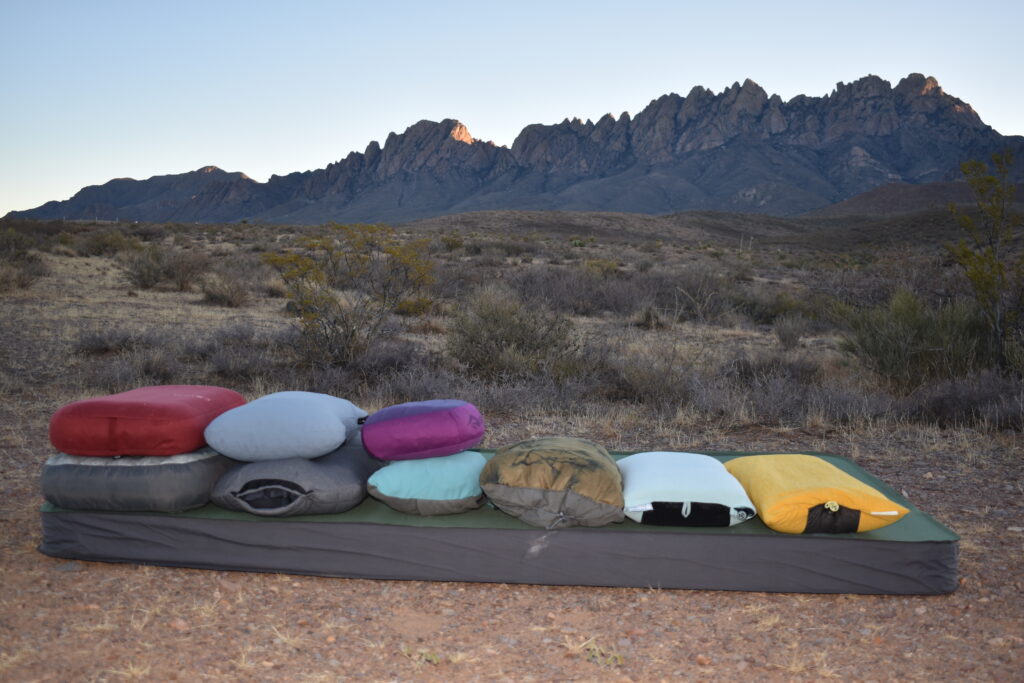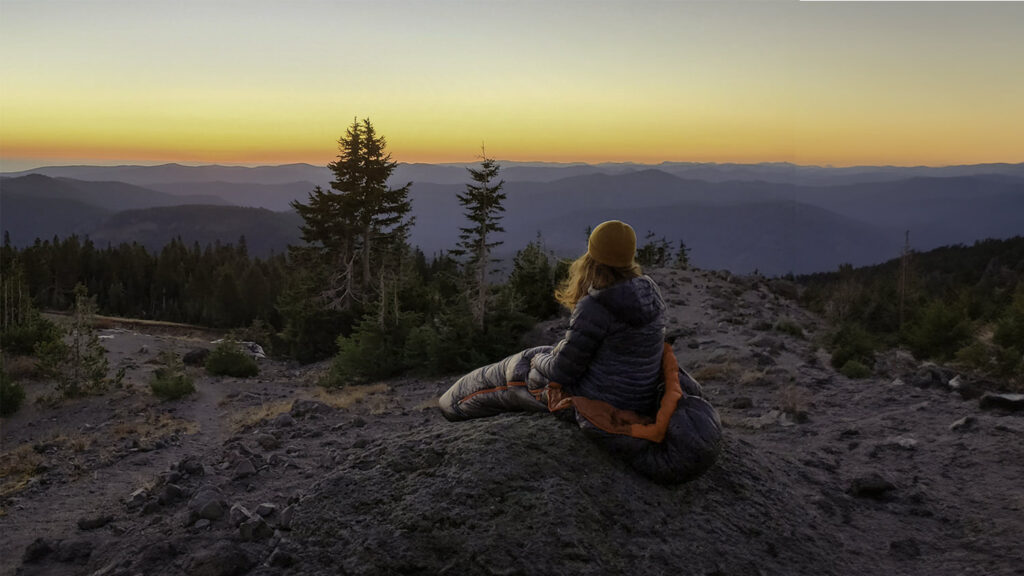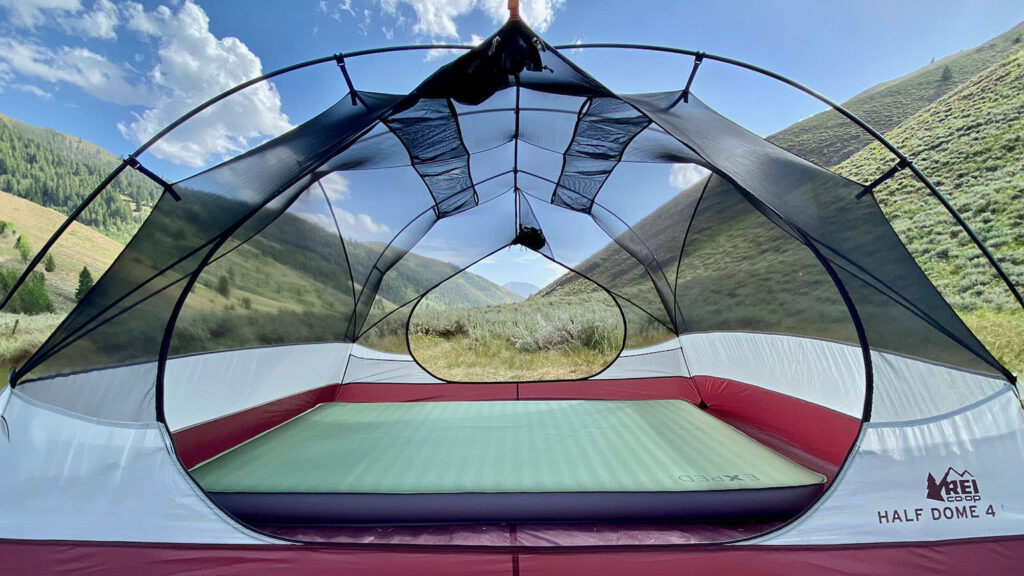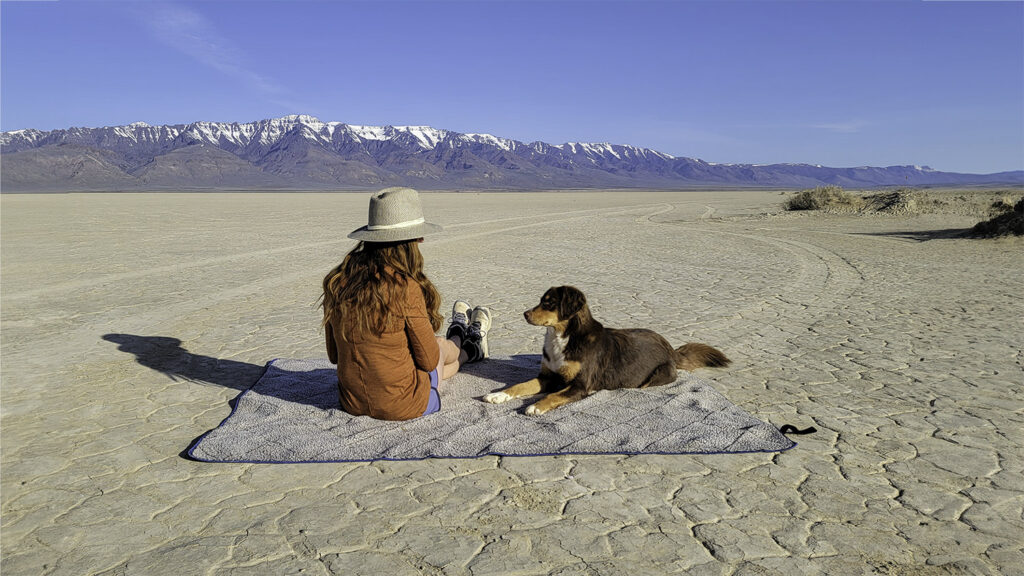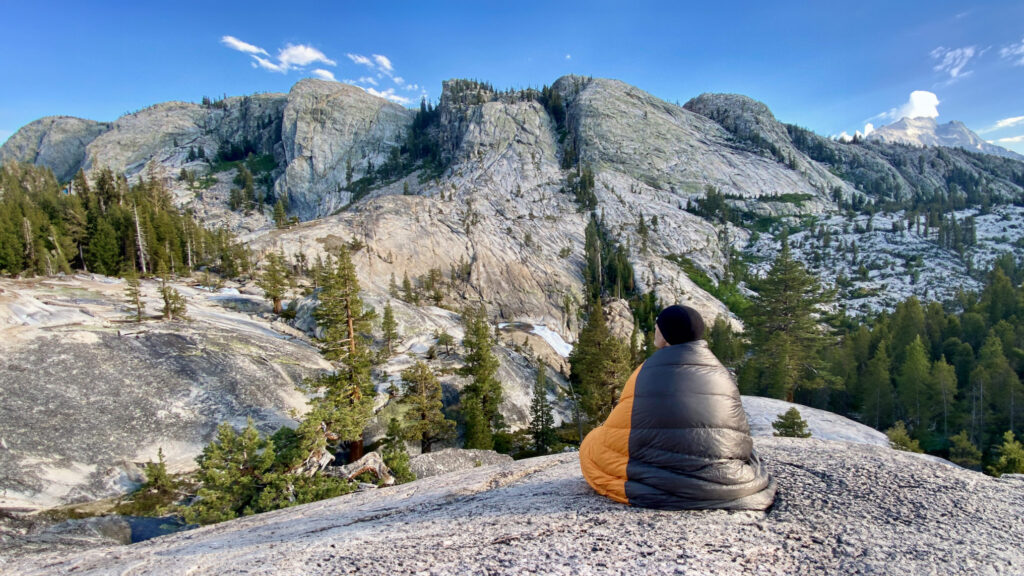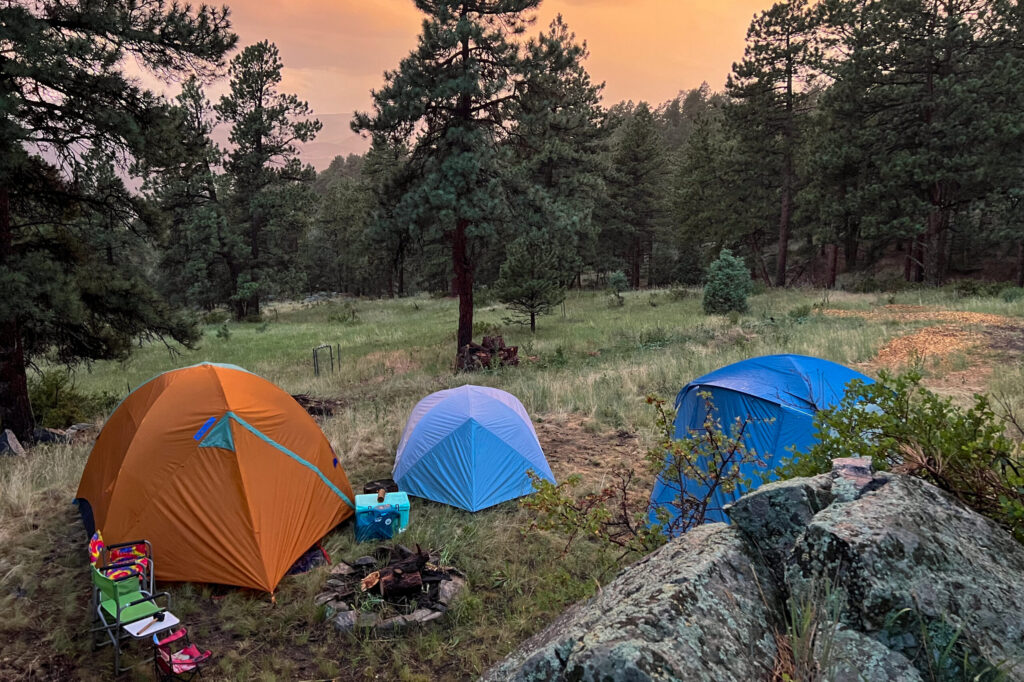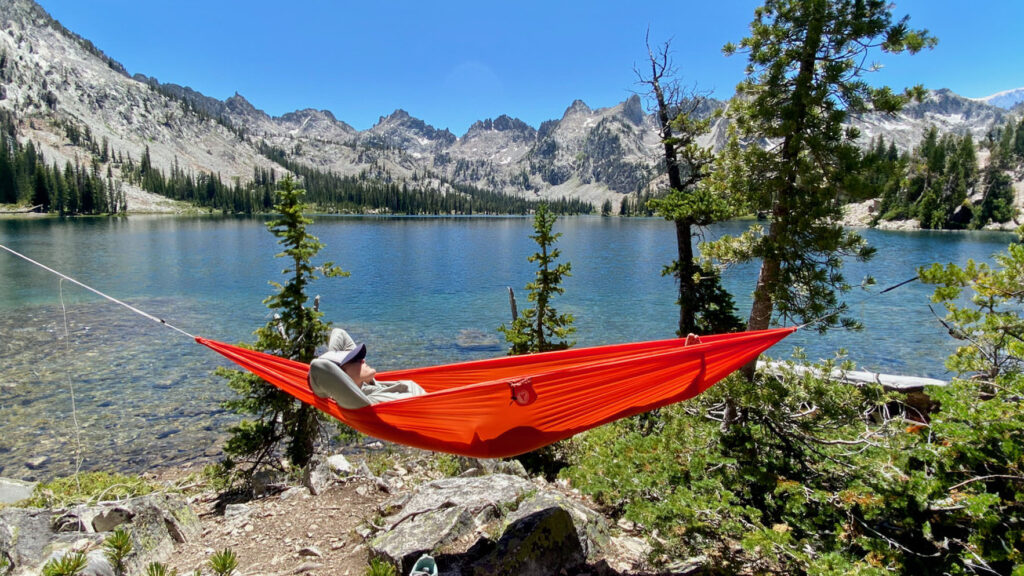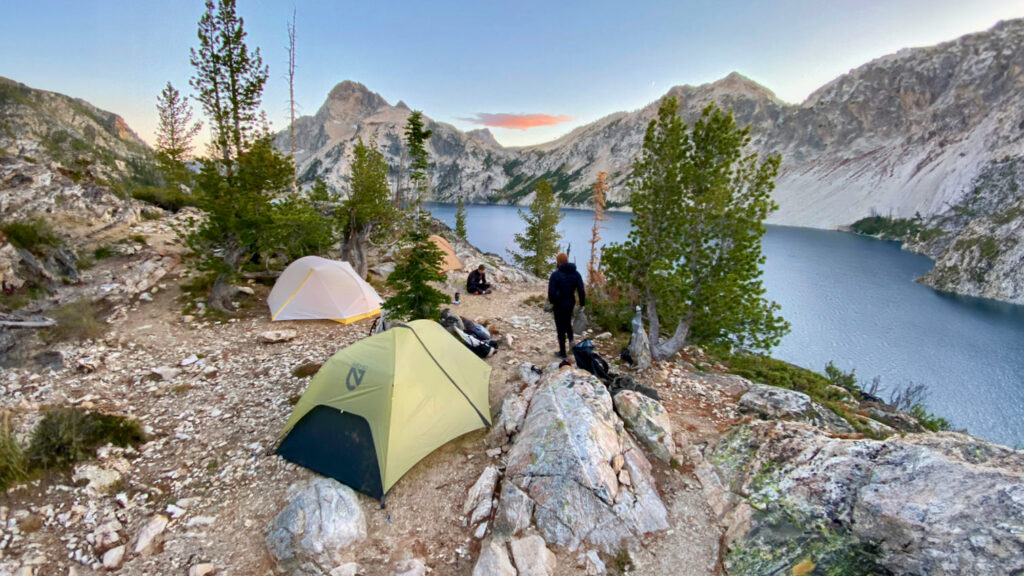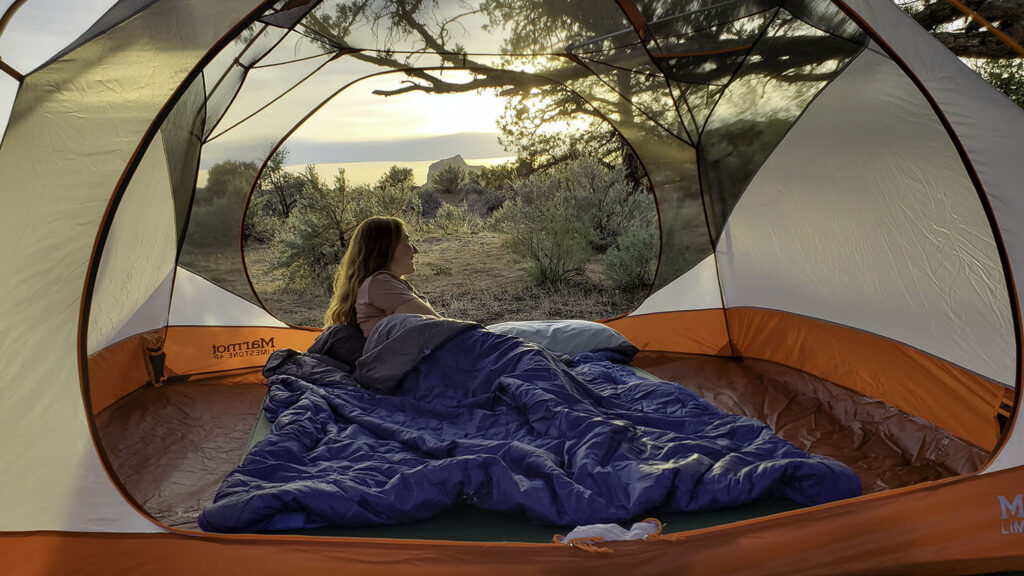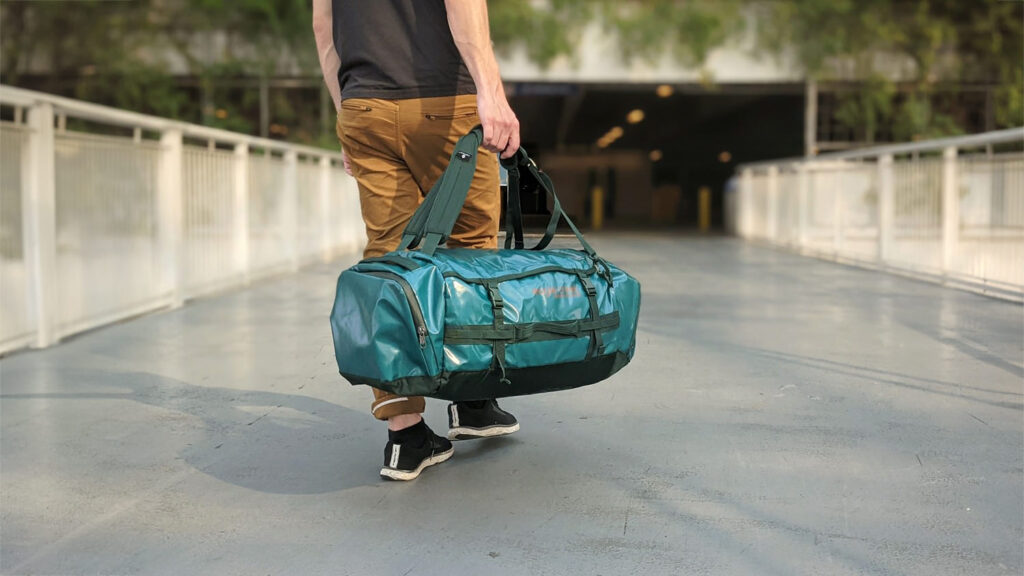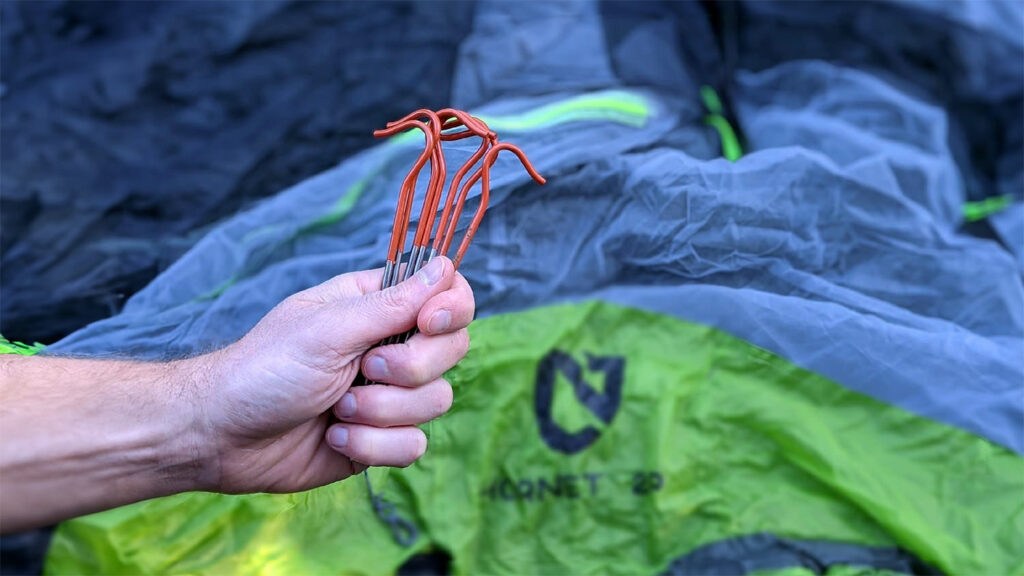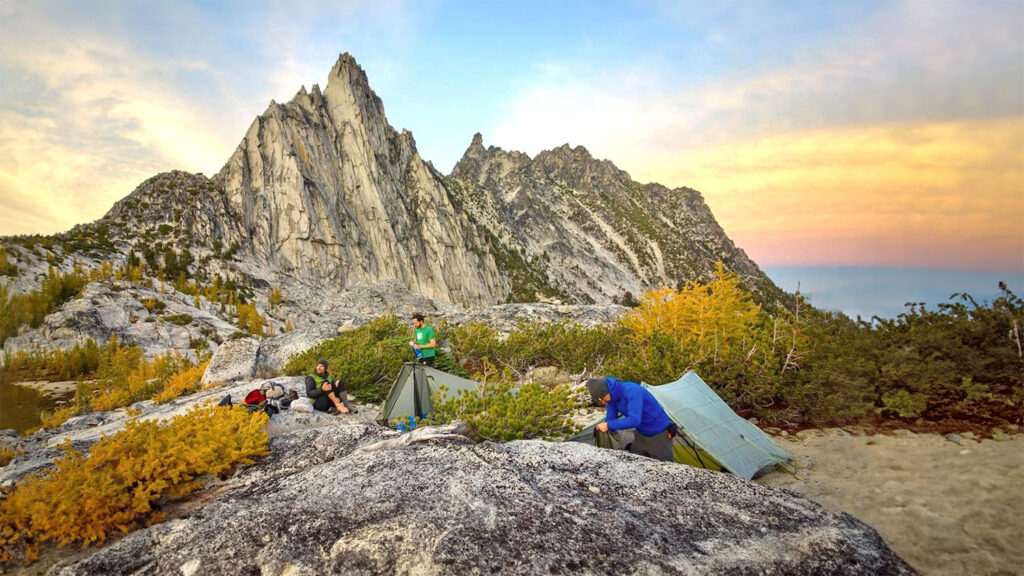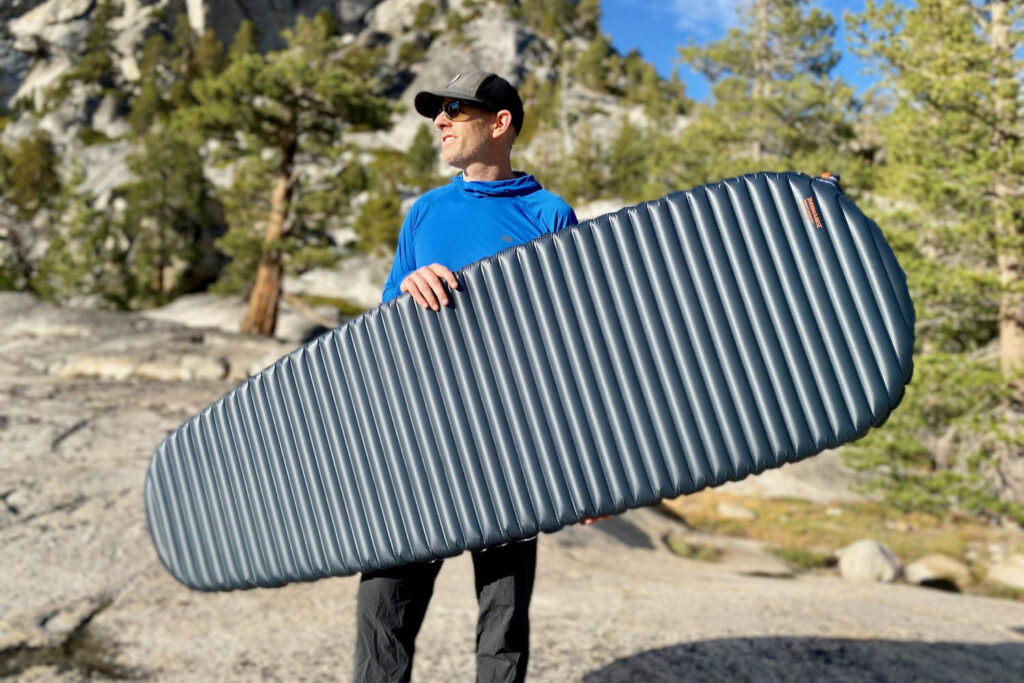
Just like a mattress at home can make all the difference (for better or worse), so can a sleeping pad. A great one will keep you comfortable, warm, and help keep your pack weight down.
Our team of gear experts has spent more than 1,000 nights in the backcountry testing the top sleeping pad options. We’ve taken over 40 different pads to their limit on months-long thru-hikes, multi-day treks, and quick overnights to bring you this list of the very best backpacking sleeping pads.
And for more info, check out some of our other most popular gear guides:
Quick Picks for Backpacking Sleeping Pads
Check out this quick list of our favorite sleeping pads, or continue scrolling to see our full list with in-depth reviews.
Best Backpacking Sleeping Pad Overall: NEMO Tensor All-Season ($200)
Best Backpacking Sleeping Pad Runner Up: Therm-a-Rest NeoAir XLite NXT ($210)
Best Sleeping Pad for Cold Sleepers & Winter Backpacking: Therm-a-Rest NeoAir XTherm NXT ($240)
Best Ultralight Rectangular Sleeping Pad: NEMO Tensor Trail Ultralight ($180)
Comfortable & Affordable Pad with Side Rails: Big Agnes Rapide SL Insulated ($150)
Thick, Comfortable & Durable Sleeping Pad: Sea to Summit Ether Light XT Insulated ($199)
Affordable & Warm 3-Season Sleeping Pad: REI Helix Insulated Air ($169)
Quiet Pad with an Excellent Warmth-to-Weight Ratio: Big Agnes Zoom UL ($180)
Lightest Sleeping Pad for Summer Backpacking: Therm-a-Rest UberLite ($230)
Best Foam Sleeping Pad: NEMO Switchback ($55)
Budget-Friendly Closed-Cell Foam Sleeping Pad: Therm-a-Rest Z Lite Sol ($58)
Best Value Sleeping Pad for Back Sleepers: Sea to Summit Ultralight Insulated ($169)
Most Affordable Backpacking Air Pad: Klymit Static V2 ($75)
What’s new
We’ve updated the reviews of our long-time favorites with more in-depth analyses and added some new picks to the list:
- We have a new overall favorite pad with the Tensor All-Season for its exceptional warmth-to-weight ratio, comfort, and convenience.
- We’ve added the NEMO Tensor Trail as our favorite ultralight rectangular pad.
- We’ve updated our best budget pick to the Klymit Static V2 from the previous model of the Static V.
- Big Agnes released a new version of the Rapide SL Insulated with some exciting upgrades; we’ve updated our review and moved it up the list.
- The Therm-a-Rest Z Lite Sol also earned a spot for foam pad users.
Backpacking Sleeping Pads Overall Testing scores
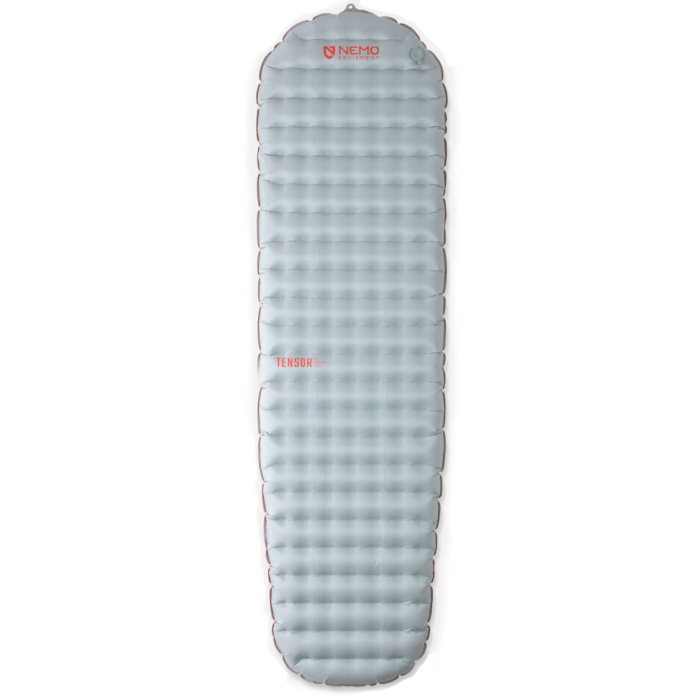
NEMO Tensor All-Season
Best Backpacking Sleeping Pad Overall
CleverHiker Rating: 82.8/100
Price: $200
Weight: 14.1 oz.
R-Value: 5.4
Thickness: 3.5 in.
Pros
- Ultralight
- Excellent warmth-to-weight ratio
- Above-average comfort
- Exceptionally quiet
- Many size/shape options
- Quick inflation/deflation
- Small packed size
- Comes with our favorite pump sack
Cons
- Expensive
- Not as durable as some
The NEMO Tensor has always held a spot among our top picks, but the newest line of Tensors really upped the ante. The NEMO Tensor All-Season has an R-value that makes it very versatile – from summer backpacking all the way into mild winter conditions – and it’s one of the comfiest and quietest sleeping pads on the market. It delivers all this at a very low weight, small packed size, and great price for the specs.
We tested the mummy shape for this review since we think that’s the version with the most impressive specs. But hikers who prefer the extra space of a rectangular pad can choose from regular, regular wide, and long wide without taking too much of a hit on weight, cost, and packability.
Our testing excursions in Arizona’s Bradshaw Mountains revealed that the Tensor All-Season retains all of our favorite qualities of the previous iteration – incredibly quiet material, exceptionally comfortable design, and industry-leading valve/pump sack construction – while improving upon the areas where the previous version fell a bit short. The All-Season is lighter, warmer, and thicker than the old Tensor, and yet the cost didn’t rise.
One of the most outstanding features of the Tensor All-Season is its multifunctional valve. It sits flat against the pad so it doesn’t intrude on your sleeping area, but it’s easy to reach while lying down so you can adjust the firmness of your pad without sitting up. The valve is designed with two flaps – open the first one and you’ll find the one-way valve which pairs with the included Vortex Pump Sack for quick inflation. Pushing this part of the valve in is also how you let small amounts of air out to dial in your perfect level of firmness. Pulling the second flap opens the dump valve which quickly lets out all the air for fast and easy pack-up.
When looking at its main competition – the Therm-a-Rest NeoAir XLite NXT – the Tensor All-Season is warmer, more convenient, costs a bit less, and weighs only 1.1 ounces more. The specs, comfort, and convenience of the Tensor ultimately won us over in our side-by-side testing, but it was a close call and both pads are truly excellent. Either way you choose, for spring, summer, and fall backpacking trips, these pads are truly the gold standard.
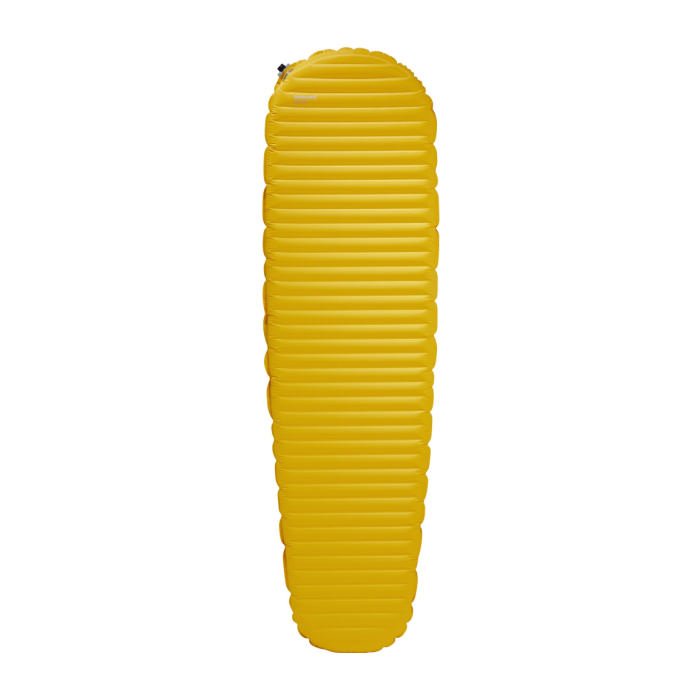
Therm-a-Rest NeoAir XLite NXT
Best Backpacking Sleeping Pad Runner Up
CleverHiker Rating: 82.5/100
Price: $210
Weight: 13 oz.
R-Value: 4.5
Thickness: 3 in.
Pros
- Exceptional warmth-to-weight ratio
- Above-average comfort
- Significantly quieter than previous model
- Durable for the weight
- Highly packable
Cons
- Expensive
- Slightly slower inflation/deflation
- Below-average pump sack
Therm-a-Rest’s NeoAir XLite NXT is easily one of the best 3-season sleeping pads on the market. Several members of the CleverHiker team have a total of over 1,000 miles of experience with this pad and you’ll often find it in our packs during spring, summer, and fall trips. The XLite has a rare combination of comfort, warmth, and weight that make it tough to beat for backpacking.
The newest NXT version of the XLite has a slightly higher R-value and is 3 inches thick, so it’s a bit warmer and cushier than before. We’ve found the insulation good enough to stay comfortable in temps all the way down into the low 20s when paired with a quality sleeping bag, which is really incredible for a pad this light. CleverHiker Editor-in-Chief, Dave Collins, recently took the XLite NXT on a snowy late-season trek through Idaho’s Sawtooth Mountains and stayed perfectly warm and comfortable each night.
Keeping pack weight down on backcountry trips is critical, and the XLite NXT is among the absolute best this arena. At just 13 ounces, the XLite is one of the lightest insulated pads on the market. And you’d be hard-pressed to find another option that offers the same warmth or durability at this weight.
Ultralight gear tends to be on the delicate side, but that’s not the case with the XLite. With just a little care during campsite selection, this pad can last for thousands of miles. Senior Gear Analyst, Casey Handley, took the XLite NXT on a 300-mile section of the Arizona Trail – a notoriously prickly path – and it held up without incident despite some lazier evenings where campsite clearing fell off the priority list. Still, the XLite is an air pad and accidents can happen. The included repair kit makes field fixes easy, and the valve can even be replaced if it fails – a fairly unique feature for an air pad.
The main knock on previous XLite models was the crinkly sound they make when shifting around. We’re happy to report that the NXT is much quieter than previous versions. We’ve tested it many times with tentmates by our side and camp neighbors nearby with no complaints. Don’t expect complete silence though – we’d say the XLite NXT is now just about as quiet as most air pads – they all make a little noise.
The other minor inconvenience with the XLite comes in the form of ease-of-use. The pump sack that’s included with the XLite is pretty basic, and isn’t as efficient as the top competitors. Additionally, the XLite doesn’t have a dump valve, so you’ll have to squeeze air out of the pad when it’s time to pack up camp in the morning. This will slow down the packing process a bit, but it’s not a dealbreaker.
All things considered, the NeoAir XLite is a truly exceptional sleeping pad that we’ve put through the wringer over thousands of trail miles. It’s an all-time great backpacking sleeping pad and is clearly one of the best on the market.
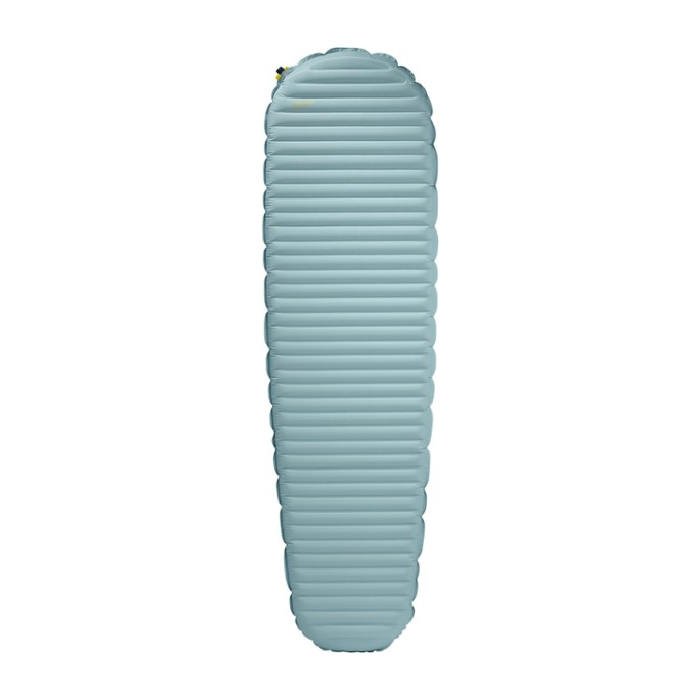
Therm-a-Rest NeoAir XTherm NXT
Best Sleeping Pad for Cold-Sleepers & Winter Backpacking
CleverHiker Rating: 82/100
Price: $240
Weight: 1 lb.
R-Value: 7.3
Thickness: 3 in.
Pros
- Exceptional warmth-to-weight ratio
- Very warm (suitable for winter use)
- Lightweight
- Above-average comfort
- Compact for a 4-season pad
- Very durable for an air pad
Cons
- Expensive
- Slower inflation/deflation
- Slight crinkle sound
- Below-average pump sack
The Therm-a-Rest NeoAir XTherm NXT is the warmer and more durable sibling of the XLite above. This pad is our top recommendation for cold sleepers and hikers heading out for adventures in the winter chill. We loved the previous XTherm, but the latest NXT model is even better – it’s warmer, thicker, and even a touch lighter than before.
The R-value of a sleeping pad tells you how much insulation it provides – the higher the number, the warmer the pad. With an R-value of 7.3, the XTherm NXT is one of the warmest backpacking sleeping pads on the market. It’s also considerably lighter than most other highly insulated sleeping pads, so it’s a great buy for hikers looking for the best balance of warmth and weight.
The XTherm is the pad our team members opt for when we head out on winter backpacking adventures. In our testing, even in absolutely frigid temperatures and several inches of fresh powder, we’ve stayed warm and comfortable thanks to the XTherm.
This pad also has a durable layer of 70-denier fabric on the underside to combat wear and prevent punctures. Its level of durability is among the best we’ve ever tested for backpacking air pads. The XTherm does make a slight crinkle sound when you shift around on it, but its considerable strengths far outweigh this minor downside.
With a weight that’s lower than the typical 3-season pad but an R-value ready for serious winter adventures, it’s no wonder the NeoAir XTherm NXT has been a fan favorite for many years.
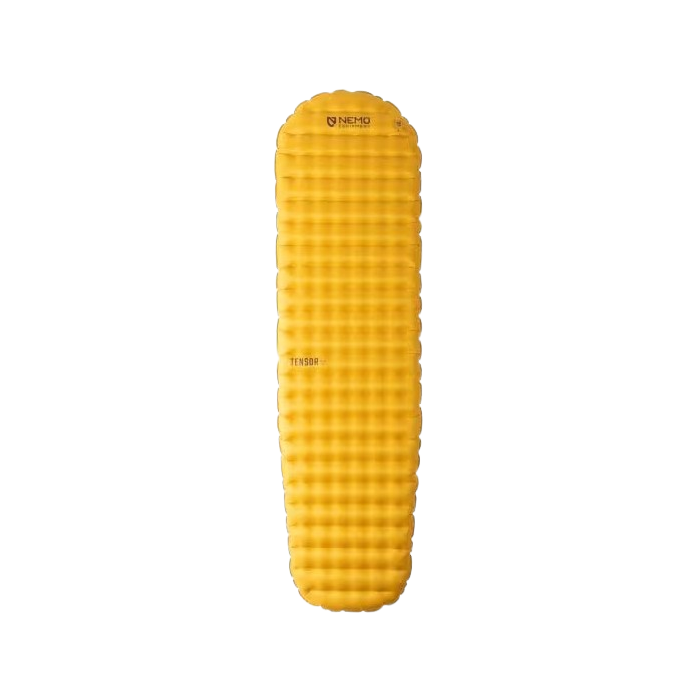
NEMO Tensor Trail Ultralight Insulated
Best Ultralight Rectangular Sleeping Pad
CleverHiker Rating: 75.3/100
Price: $180
Weight: 13 oz.
R-Value: 2.8
Thickness: 3.5 in.
Pros
- Ultralight
- Above-average comfort
- Exceptionally quiet
- Many size/shape options
- Quick inflation/deflation
- Very durable for the weight
- Comes with our favorite pump sack
Cons
- A bit expensive
- Not warm enough for sub-freezing temps
- Longer packed size
The NEMO Tensor Trail sleeping pad is surprisingly light for how much comfort it delivers. This is one of the thickest, quietest, and lightest pads on our list, and there’s ample room to sprawl since it’s a rectangular pad.
NEMO has always offered their Tensor sleeping pads in a wider variety of shapes and sizes than most other pad makers, and this newest addition to the lineup carries on that tradition. Hikers who sleep on their backs or stomachs will appreciate that both the regular and long sizes come in a wide version, and those who prioritize shaving every ounce possible can shed grams with the mummy-shape Tensor Trail.
CleverHiker Senior Gear Analyst, Casey Handley, tested the mummy-shaped Tensor Trail on the final 500 miles of the Arizona Trail. She sung the praises of this pad upon her return – saying that the Tensor Trail is an excellent choice for thru-hikers due to its extra thickness that makes it easy to dial in the firmness without bottoming out, the well-designed valve that keeps inflation/deflation super quick, and the miniscule weight and packed size.
That said, we think most hikers will prefer the extra surface area of the rectangular model which allows your feet to rest wider apart when back sleeping. Still, if you do decide that you’d prefer to save weight with the mummy version, the fabric isn’t as slippery as some others and it’s fairly easy to stay centered on the pad without your limbs sliding off.
Most backpacking sleeping pads that aim to fill the ultralight niche cut down on thickness or forego insulation, but the Tensor Trail has both. At 3.5 inches thick, the Tensor Trail sits taller than most of the competition – ultralight or otherwise. While this pad does include more insulation than many other UL pads, at an R-value of 2.8 the Tensor Trail will likely work best as a summer backpacking option for most.
The Tensor also comes with one of the best pump sacks on the market, making inflation fast and easy. On top of that, the zero-profile valve allows for quick deflation and simple micro-adjustments.
We’ve been big fans of the NEMO Tensor since the first model hit the shelves, and the ultralight Tensor Trail version has quickly become a new favorite.
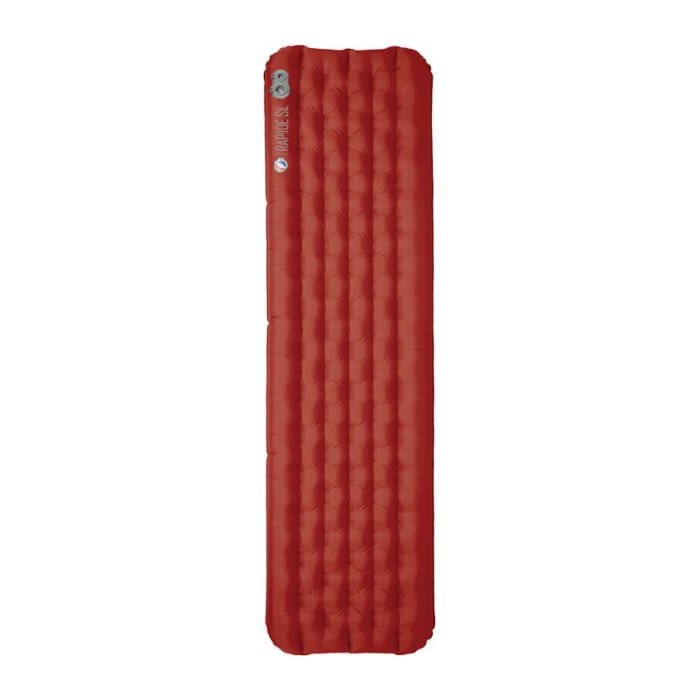
Big Agnes Rapide SL Insulated
Comfortable & Affordable Sleeping Pad with Side Rails
CleverHiker Rating: 73.8/100
Price: $150
Weight: 1 lb. 2 oz.
R-Value: 4.8
Thickness: 3.5 in.
Pros
- Above-average comfort
- Huge variety of size options (including double)
- Less expensive
- Quiet
- Lightweight for the warmth & thickness
- Warm
- Durable
- Quick to deflate and pack up
- Side rails keep you centered
Cons
- Heavier/bulkier than others
- A bit tedious to inflate
- Not as warm as its R-value indicates
The Big Agnes Rapide SL Insulated is a super cushy, durable, and warm sleeping pad for 3-season adventures. The Rapide is less expensive compared to pads with similar specs, so it’s an excellent choice for backpackers looking to save without sacrificing comfort.
It differentiates itself from other pads with its large side rails that help to keep you centered. The sleeping surface of the Rapide is 3.5 inches thick – making it one of the thickest backpacking pads on our list – with sides that are a generous 4.25 inches. This makes it ideal for hikers who wriggle around at night and struggle to keep from sliding off their pads. The thickness also allows you to dial in the perfect firmness level to suit your sleeping style without worrying about bottoming out.
With all the different available sizes, any hiker should be able to find a version of the Rapide that’s comfy. This is one of the only sleeping pads that doesn’t cost extra for a long version, so tall hikers don’t have to shell out extra. Both the regular and long sizes also come in a wide version, there’s also a petite size, and the Rapide is even available as a double sleeping pad.
At 18 ounces, the Rapide is among the heavier sleeping pads on our list. But the weight is very reasonable when you consider how comfortable, warm, and affordable it is. For those who prioritize comfort over all else, the Big Agnes Rapide SL is a top contender.
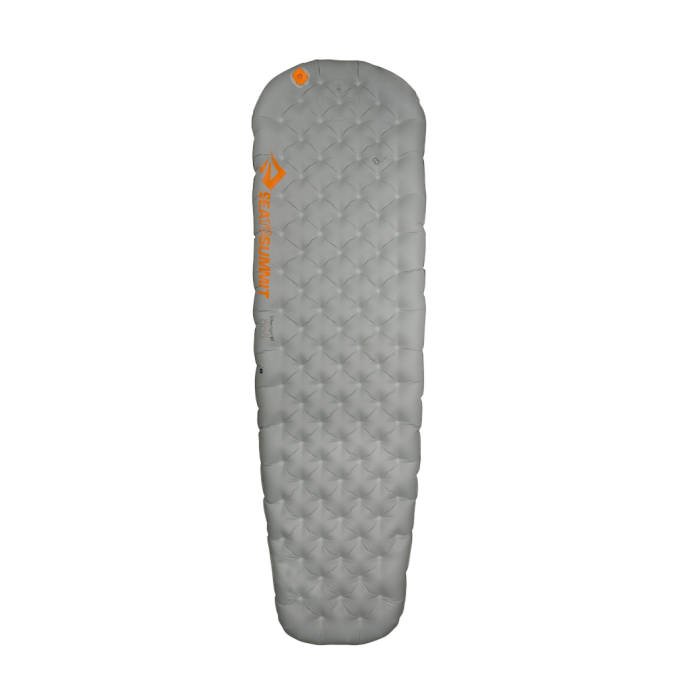
Sea to Summit Ether Light XT Insulated
Thick, Comfortable & Durable Sleeping Pad
CleverHiker Rating: 71.5/100
Price: $199
Weight: 1 lb. 1.3 oz.
R-Value: 3.2
Thickness: 4 in.
Pros
- Lightweight
- Above-average comfort
- Exceptionally durable
- Cushy
- Quick inflation/deflation
- Pump sack included
- Inclusive sizing and shapes
Cons
- Expensive
- Heavier/bulkier than some
- Slightly rubbery feel/sound
- Lower R-Value
The Ether Light XT Insulated (view women’s) is one of Sea to Summit’s lightest and cushiest insulated air pads.
The unique “air sprung cells” mimic the support of a home mattress, and they cradle the body in a way most standard air pad baffles don’t. The Ether Light is also the thickest sleeping pad on our list at four inches, which helps you dial in your preferred firmness and ensures you never bottom out.
Aside from comfort, Sea to Summit’s other big focus with the Ether Light is durability. This pad is made with thicker, stronger material that’s more resistant than many others to tears and punctures. This material does have a more rubbery sound and feel, but it’s not too bad and we think it’s a fair trade-off for the added strength.
One of our favorite features is the PillowLock system which is a unique set of Velcro-like strips that are designed to keep your Sea to Summit Aeros pillows in place. Several pillows from their Aeros line made our Best Backpacking Pillows list, and they’re all compatible with the PillowLock on the Ether Light.
With an R-value of 3.2 and a durable build, the Sea to Summit Ether Light is a great fit for 3-season backpackers looking for top-tier comfort.
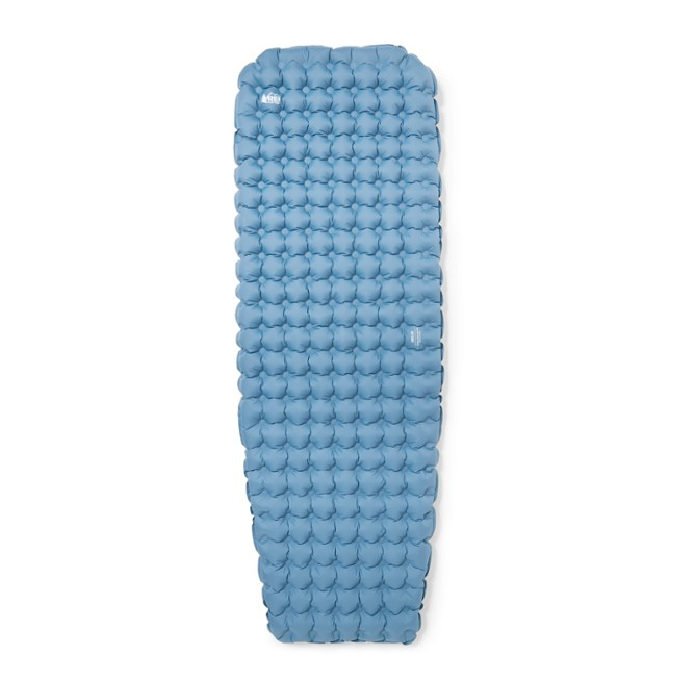
REI Helix Insulated Air
Affordable & Warm 3-Season Sleeping Pad
CleverHiker Rating: 70.8/100
Price: $169
Weight: 1 lb. 5 oz.
R-Value: 4.9
Thickness: 3 in.
Pros
- Very warm
- Less expensive
- Comfortable for back and belly sleepers
- Quick inflation/deflation
- No extra cost for wide & long options
- Quiet material
- Inclusive sizing
Cons
- Side sleepers can bottom out
- Heavier/bulkier than some
- Pump sack not dual use
- Quilted pattern isn't for everyone
- Not as durable
The REI Helix Insulated Air features the highest R-value of any pad in its price range, so it’s an excellent value for cold sleepers on a tight budget.
The quilted pattern of the Helix provides good support for hikers who lie on their back, and the thickness leaves enough room to adjust the firmness. But its dimpled design can cause side-sleepers and those that leave out some air for a squishier feel to bottom out.
The Helix is one of the heaviest sleeping pads on our list, but it’s also one of the warmest. Its price point still makes it a good option for budget-conscious hikers, but the Big Agnes Rapide SL Insulated above is still the better deal with a lower weight, thicker rectangular sleeping surface, and almost identical R-value.
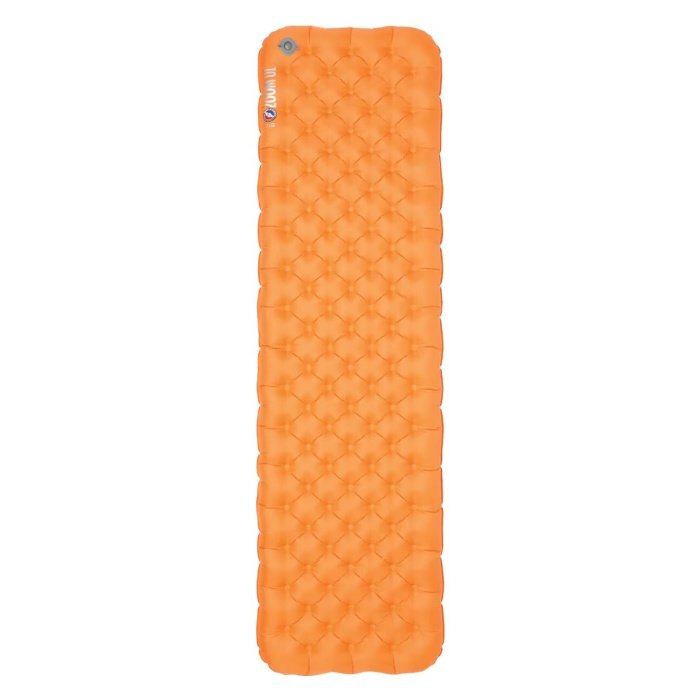
Big Agnes Zoom UL
Quiet Pad with an Excellent Warmth-to-Weight Ratio
CleverHiker Rating: 70.8/100
Price: $180
Weight: 14 oz.
R-Value: 4.3
Thickness: 3.25 in.
Pros
- Ultralight
- Above-average comfort
- Excellent value
- Very small packed size
- Side rails keep you centered
- Quiet
- Valve design allows precise micro-adjustments
- Wider than most pads
Cons
- A bit expensive
- Slow deflation
- Pump sack is a bit cumbersom
- Valve placement isn't ideal for everyone
Big Agnes is known as the mother of comfort, and they’re definitely earning that title with the Zoom UL. Added comfort can often mean added bulk and weight when it comes to backpacking gear, but the Zoom UL delivers an exceptionally cushy night’s sleep in a small, lightweight package.
Pads with comparable weight, R-value (warmth), and packability will generally run you $200 or more, but the Zoom UL comes in at a friendlier price point. At 3.25 inches thick in the center (and 3.5 inches on the side rails to help keep you in the middle), this is also one of the thicker ultralight pads on our list. This is a real advantage for side-sleepers and those who like a squishy pad since you’ll have more room to adjust the firmness without bottoming out.
So with all that said, why isn’t this pad at the very top of our list? It really boils down to convenience. The valve is a bit slower and more finicky to deflate, and the included pump sack is our least favorite out of all the ones we tested. These aren’t the biggest gripes in the world, but when it comes to the best of the best we had to be picky.
That said, the Zoom UL is an awesome value pad that will have you sleeping like a baby in the backcountry. So if you prioritize saving money over having a few extra conveniences, you won’t be disappointed by the Zoom UL.
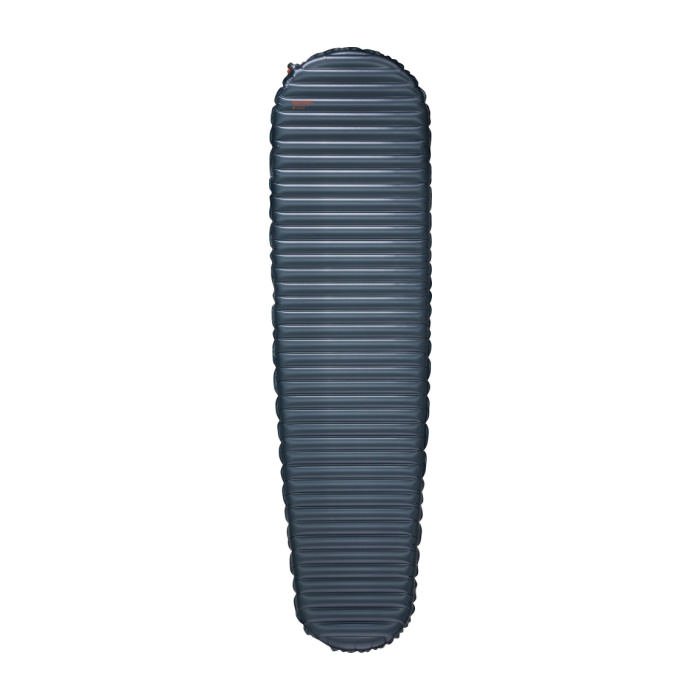
Therm-a-Rest NeoAir UberLite
Lightest Sleeping Pad for Summer Backpacking
CleverHiker Rating: 70.3/100
Price: $230
Weight: 8.8 oz.
R-Value: 2.3
Thickness: 2.5 in.
Pros
- Ultralight
- Above-average comfort
- Very small packed size
- Quiet
Cons
- Expensive
- Not warm enough for sub-freezing temps
- Less durable
For hikers whose main priority is keeping pack weight to an absolute minimum without sacrificing the comfort of an air pad, there’s no better option than the Therm-a-Rest NeoAir UberLite. It’s very comfortable, has a tiny packed size, and best of all – it’s ridiculously lightweight.
The UberLite achieves this low weight with a couple of clever design choices. For one, it cuts down on thickness by a half inch versus the other NeoAir pads. It’s also not as insulated as many others – with an R-value of 2.3, the UberLite is best for summer adventures. But the biggest weight savings comes from the thin material the UberLite is constructed with. You’ll want to be careful with it to avoid punctures – make sure to always clear sharp rocks and pokey sticks from under your tent and bring repair tape just in case.
Senior Gear Analyst, Casey Handley, took the UberLite on her thru-hike of The Long Trail where it performed beautifully and kept her pack weight low for the challenging climbs of Vermont. A year later, she took the same pad on her thru-hike of the Colorado Trail where it didn’t fare so well. It ended up with multiple tears, punctures, and a leaking valve. Moral of the story – your mileage may vary with this pad.
On the brightside, punctures and tears are relatively easy to patch with repair tape, and the WingLock Valve is replaceable. So the UberLite could be well-worth the durability tradeoff for the weight savings as long as you’re prepared when problems arise.
Though it requires a little more diligence, the UberLite is exceptionally light, very comfortable, and ridiculously small when packed. If shaving ounces is your number one priority, the UberLite is the way to go.
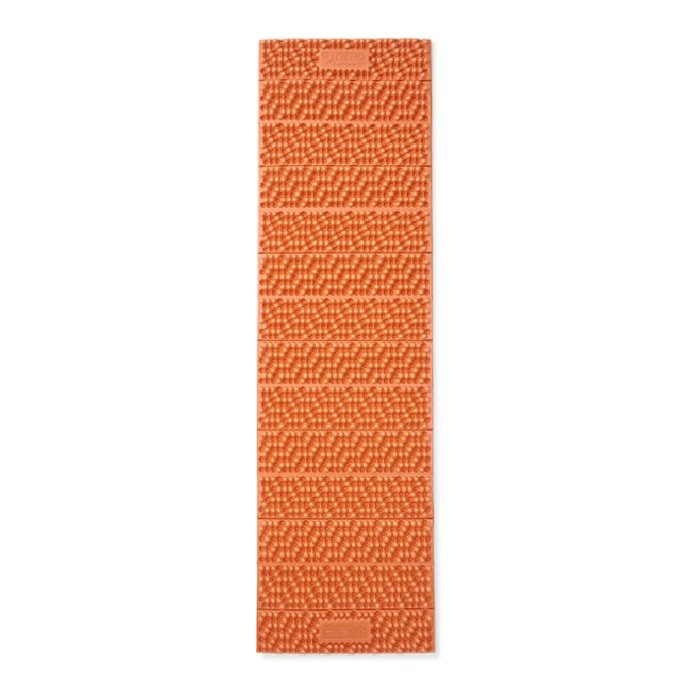
NEMO Switchback
Best Foam Sleeping Pad
CleverHiker Rating: 69/100
Price: $55
Weight: 14.5 oz.
R-Value: 2
Thickness: 0.9 in.
Pros
- More durable than air pads
- Affordable
- Quick to pack/unpack
- Doubles as a sit pad
- Quiet
Cons
- Not as comfortable as air pads
- Bulky
- Not warm enough for sub-freezing temps
Tired of worrying about your air pad staying inflated? Look no further than the affordable and hassle-free NEMO Switchback. This closed-cell foam pad is easy on the wallet, and it’s also easy to use at camp.
Foam pads are nice because you’ll never have to spend time inflating/deflating them, and you’ll never have to worry about waking up on the cold ground since they can’t spring a leak. The ease of use and durability are by far the biggest strengths of the Switchback, but this pad is also quite lightweight.
As a foam pad, the downside of the Switchback is that it’s less comfortable than air pads – unless you prefer sleeping on firm surfaces. Still, there are some cases where we’ll opt for the Switchback over (or in addition to) an air pad.
When the CleverHiker team went on a group winter backpacking trip along the White River on Mt. Hood, we each brought one of these closed-cell foam pads to use under our air pads for extra insulation from the snow. We also like using the Switchback when traveling with dogs since we don’t have to worry about puppy paws putting holes in it. Senior Gear Analyst, Casey Handley, even cut a Switchback in half and brings one piece of it to use as a dedicated sleeping pad for her dog.
There’s a lot to love about the convenience, affordability, and durability of the Switchback. So if you prefer a firm sleeping surface, simplicity, and worry-free comfort, the NEMO Switchback might be exactly what you’re looking for.
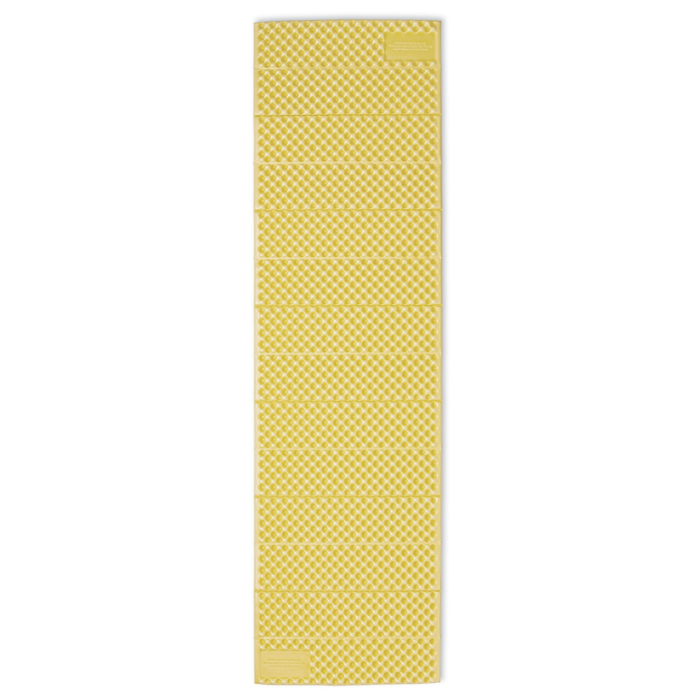
Therm-a-Rest Z Lite Sol
Budget-Friendly Closed-Cell Foam Sleeping Pad
CleverHiker Rating: 68.8/100
Price: $58
Weight: 14 oz.
R-Value: 2
Thickness: 0.75 in.
Pros
- More durable than air pads
- Affordable
- Quick to pack/unpack
- Doubles as a sit pad
- Quiet
Cons
- Expensive
- Slower inflation/deflation
- Slight crinkle sound
The Therm-a-Rest Z Lite Sol is the original beloved closed-cell foam pad used by thru-hikers, budget-conscious backpackers, and minimalist hikers for years. We love this pad for its ease-of-use, low weight, and affordable price tag.
Just like the NEMO Switchback above, the Z Lite Sol is a nearly indestructible and exceptionally versatile piece of gear. It can be used as a sit pad, a sleeping pad, an insulating layer under an air pad, a dog bed – and the list goes on.
While most hikers will likely find an air pad more comfortable, the Z Lite Sol is surprisingly comfy for a piece of foam that’s less than an inch thick. CleverHiker Founder, Dave Collins, took the Z Lite Sol on his PCT thru-hike, and he loved it for its quick, easy set-up, low weight, and multi-purpose design. Like Dave, many thru-hikers find the Z Lite an ideal choice for long-distance trails since it’s unlikely to fail during the long haul.
The Therm-a-Rest Z Lite Sol and NEMO Switchback are basically identical, but we gave the slight edge to the Switchback because it’s a tad less bulky and we found that the nodes kept their loft a little better than the Z Lite’s. At the end of the day, they’ll both perform essentially the same so you can’t go wrong with either option.
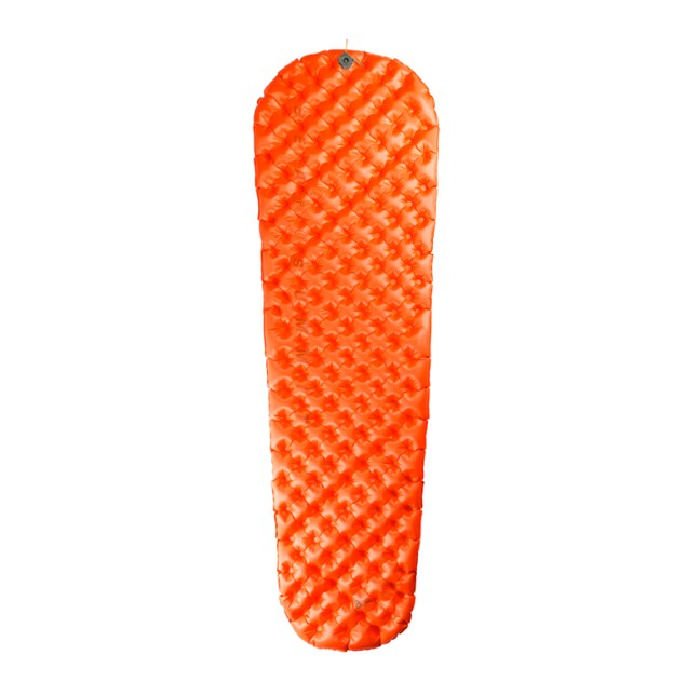
Sea to Summit Ultralight Insulated
Best Value Sleeping Pad for Back Sleepers
CleverHiker Rating: 67.3/100
Price: $169
Weight: 1 lb. 0.9 oz.
R-Value: 3.1
Thickness: 2 in.
Pros
- Lightweight
- Comfortable for back-sleepers
- Less expensive
- Above-average durability
- Quick inflation/deflation
- Excellent valve design for micro-adjustments
- Wider than most pads
Cons
- Can bottom out when shifting around
- Slightly rubbery feel/sound
- Heavier than some
- Valve location isn't ideal
The Sea to Summit Ultralight Insulated pad (view women’s) is one of the most durable air pads we’ve tested and is also comparable to its sibling, the Ether Lite XT, above. And it also features Sea to Summit’s “air sprung cells” that provide cushy comfort and feel surprisingly like your mattress at home.
The benefit the Ultralight has over the Ether Light is its more affordable price tag. The Ultralight is also just about as warm and comfortable as the Ether Light, but it’s a tad lighter and slightly less bulky. So what made this pad rank below the Ether Light? It really comes down to comfort.
With just 2 inches of thickness, some users will likely bottom out when shifting around on the Ultralight, and it probably isn’t the best fit for side sleepers. That said, it still provides a very comfortable night’s rest for back- and stomach-sleepers who tend to stay put when snoozing.
While the Ultralight may not be the right pad for everyone, it has a good valve system that’s quick and easy to use, it’s more durable than the average air pad, and it’s decently light and warm. So if you’re a back-sleeper in the market for a comfortable, lightweight, and sturdy backpacking sleeping pad that costs less than most of its competitors, the Sea to Summit Ultralight is a great choice.
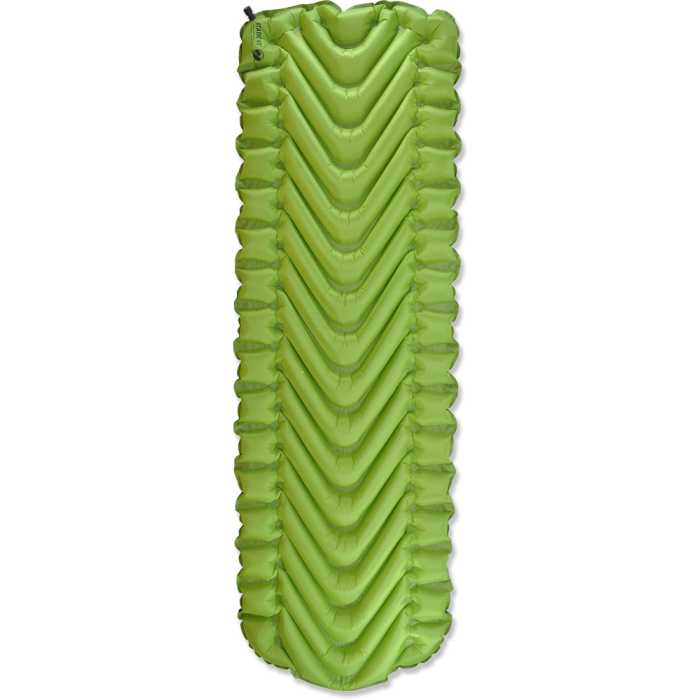
Klymit Static V2
Most Affordable Backpacking Air Pad
CleverHiker Rating: 60.5/100
Price: $75
Weight: 1 lb.
R-Value: 1.3
Thickness: 2.5 in.
Pros
- Affordable
- A bit wider than others
- Above-average durability
- Lightweight
Cons
- Not very warm
- Can bottom out when shifting around
- Slower inflation/deflation
The Klymit Static V2 is one of the most affordable air pads on the market. It’s built with thicker materials than most lightweight backpacking sleeping pads and is slightly wider than the standard pad size as well.
Though the large spaces between the air chambers may cause you to bottom out while shifting around, the V-shaped tubes on the Static V are quite comfortable. With this in mind, side sleepers could find it difficult to get into a position where their hips are supported, so we think the Static V2 is best suited to back-sleepers or stomach-sleepers who tend to stay in one place while they snooze.
This pad has a low R-value, so it’s best for summer trips. Klymit does offer an Insulated Static V with an R-value of 1.9, but it weighs quite a bit more and that’s not a huge improvement over the 1.3 R-value of the Static V2. Still, it costs only $25 more than the Static V2, so it could be worth the weight penalty for budget-conscious hikers wanting a pad that’s a bit warmer.
Drawbacks aside, the Klymit Static V2 is still a great choice for backpackers looking to hit the trail without breaking the bank. It’s durable, decently lightweight, and it’ll get the job done at a fraction of the price of other air pads.
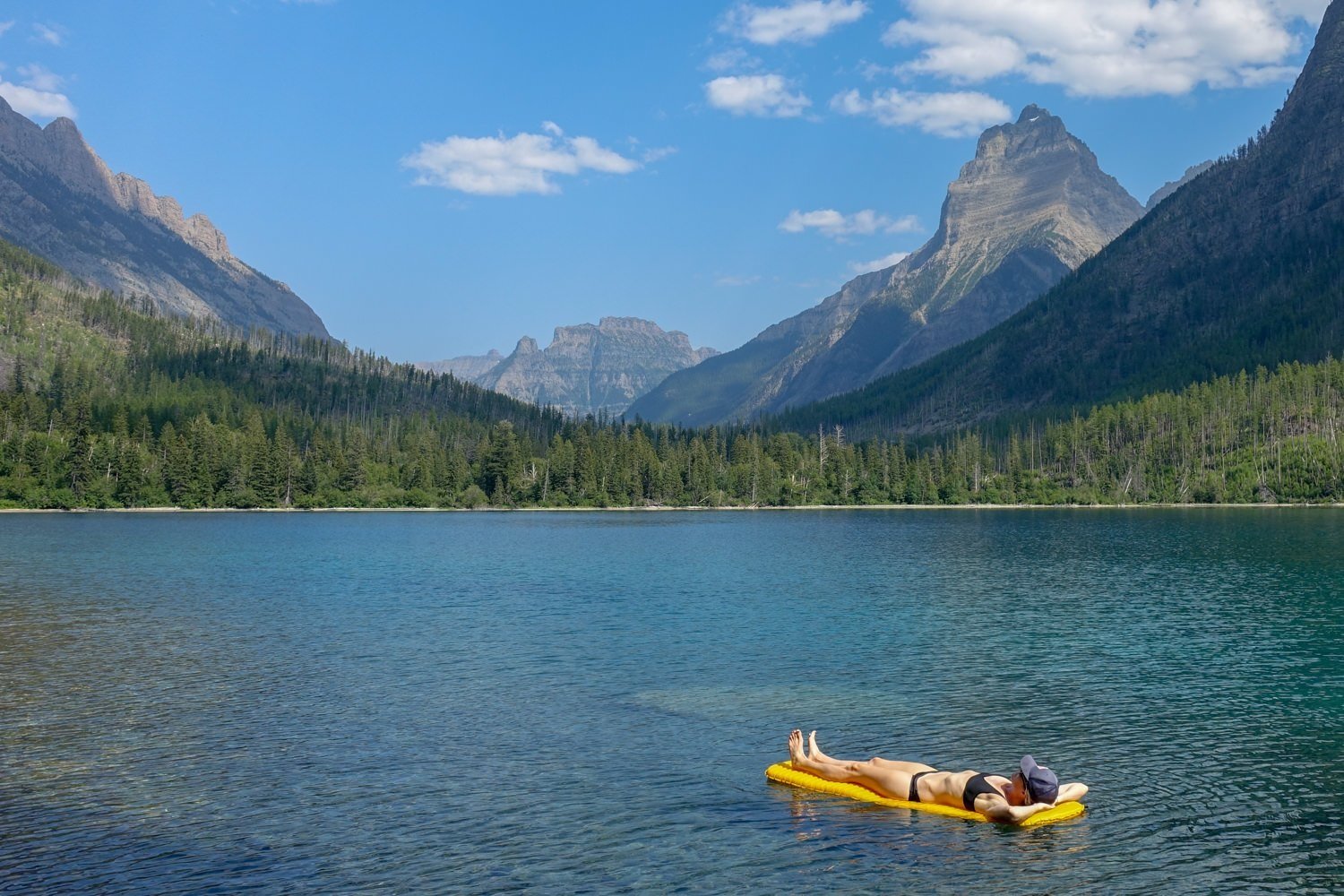
Product Comparison Table
| oSort | Product | Price | Weight | R-Value | Thickness | Volume | Packed Size | Comfort | Weight Score | Durability | Warmth | Ease of Setup | 0 |
NEMO Tensor All-Season View at REI View at NEMO |
$200 | 14.1 oz. | 5.4 | 3.5 in. | 2.1 L | 4 x 10 in. | 8.5 | 8 | 8 | 8.5 | 8.5 | 1 |
Therm-a-Rest NeoAir XLite NXT View at REI View at Amazon |
$210 | 13 oz. | 4.5 | 3 in. | 2 L | 4.1 x 9 in. | 8 | 9 | 8 | 8 | 8 | 2 |
Therm-a-Rest NeoAir XTherm NXT View at REI View at Amazon |
$240 | 1 lb. | 7.3 | 3 in. | 2.4 L | 4.5 x 9 in. | 8 | 7.5 | 8.5 | 9.5 | 8 | 3 |
NEMO Tensor Trail Ultralight Insulated View at REI View at NEMO |
$180 | 13 oz. | 2.8 | 3.5 in. | 2.1 L | 4 x 10 in. | 8.5 | 8 | 6.5 | 5.5 | 8.5 | 4 |
Big Agnes Rapide SL Insulated View at REI View at Amazon |
$150 | 1 lb. 2 oz. | 4.8 | 3.5 in. | 1.4 L | 4 x 7 in. | 8 | 5.5 | 8 | 8 | 8 | 5 |
Sea to Summit Ether Light XT Insulated View at REI View at Amazon |
$199 | 1 lb. 1.3 oz. | 3.2 | 4 in. | 2.2 L | 4.5 x 9.5 in. | 8 | 6 | 8 | 6 | 7.5 | 6 |
REI Helix Insulated Air View at REI |
$169 | 1 lb. 5 oz. | 4.9 | 3 in. | 3.2 L | 5 x 10 in. | 7.5 | 4.5 | 8.5 | 8 | 8 | 7 |
Big Agnes Zoom UL View at Amazon View at Backcountry |
$180 | 14 oz. | 4.3 | 3.25 in. | 1.3 L | 3.5 x 8.5 in. | 6.5 | 8 | 6.5 | 7.5 | 7 | 8 |
Therm-a-Rest NeoAir UberLite View at Zpacks View at Dick's Sporting Goods |
$230 | 8.8 oz. | 2.3 | 2.5 in. | 1 L | 3.6 x 6 in. | 8 | 9.5 | 3.5 | 5 | 8 | 9 |
NEMO Switchback View at REI View at Amazon |
$55 | 14.5 oz. | 2 | 0.9 in. | 9 L | 5 x 5.5 x 20 in. | 4.5 | 7.5 | 10 | 4.5 | 10 | 10 |
Therm-a-Rest Z Lite Sol View at REI View at Amazon |
$58 | 14 oz. | 2 | 0.75 in. | 9 L | 5 x 5.5 x 20 in. | 4 | 8 | 10 | 4.5 | 10 | 11 |
Sea to Summit Ultralight Insulated View at REI View at Amazon |
$169 | 1 lb. 0.9 oz. | 3.1 | 2 in. | 1.9 L | 4 x 9 in. | 6.5 | 6.5 | 7.5 | 6 | 7.5 | 12 |
Klymit Static V2 View at Amazon View at Klymit |
$75 | 1 lb. | 1.3 | 2.5 in. | 0.9 L | 3 x 8 in. | 6 | 7 | 6.5 | 4 | 6 |
|---|
How We Test & Methodology
We have spent 1,000 nights on trail with sleeping pads, testing them with an eye toward comfort, weight, warmth, durability, and ease of use.
COMFORT
Comfort is our top priority when it comes to a good night’s sleep in the backcountry. For each pad, there’s no better test than drifting off night after night. Our team takes notes on baffle orientation and design, examining how each model distributes weight and provides support to minimize pressure points. Air pads are pretty much always going to dominate here over foam. Thickness is another critical factor, with testers evaluating the pad’s ability to cushion the body against uneven terrain without bottoming out. We also assess the shape, including the length, width and taper of the sleeping pad to ensure adequate coverage for various sleeping positions and body types. We also pay close attention to the sound each pad makes when we roll over – some are surprisingly loud, so the quieter, the better.
WEIGHT
We weigh each pad and compare it to the manufacturer’s specifications to ensure that we are getting what we expect. Lighter pads are better, all else equal, however, there’s almost always a tradeoff with comfort, warmth, and/or durability.
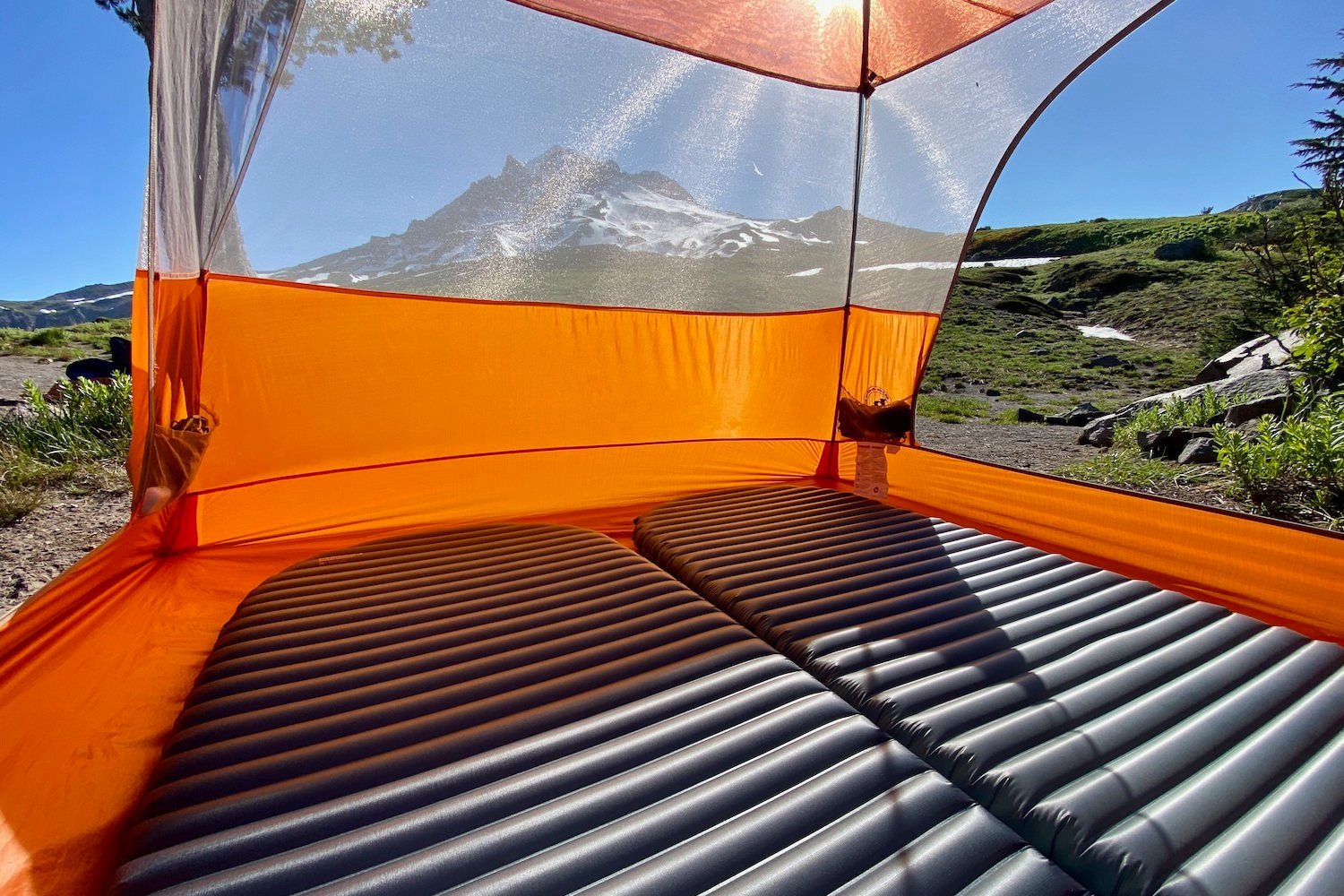
DURABILITY
Durability is what you can expect from the pad in the long term. We scrutinize the construction and thickness of the material. We don’t actively puncture holes in our pads, but accidents happen, and over multiple trips of use, it becomes clear which options are more rugged and which ones need to be coddled. We compare the types of materials, and seam quality, and we pay close attention to the design and quality of the valve system, assessing how well the valve itself holds up, as well as the seam between the valve and the main body of the pad. For foam sleeping pads, we evaluate the density and quality of the foam, looking for options that maintain their shape and cushioning through repeated use.
WARMTH
Warmth is also relatively straightforward. Central to our assessment is a pad’s R-value, which measures the thermal resistance of the sleeping pad and indicates its ability to retain body heat and shield against the cold ground. In addition to spending dozens of nights with each pad, we look at the R-value in relation to its intended use.
EASE OF SETUP
This comes down to how quickly we can get the pad set up the way we want it. Foam pads are as easy as it gets – you just need to unroll or unfold them and we also have much less concern about what surface they are on since they can’t pop. For inflatable versions, we time how long it takes to blow them up, both with direct breath and, if applicable, included pump sacks.
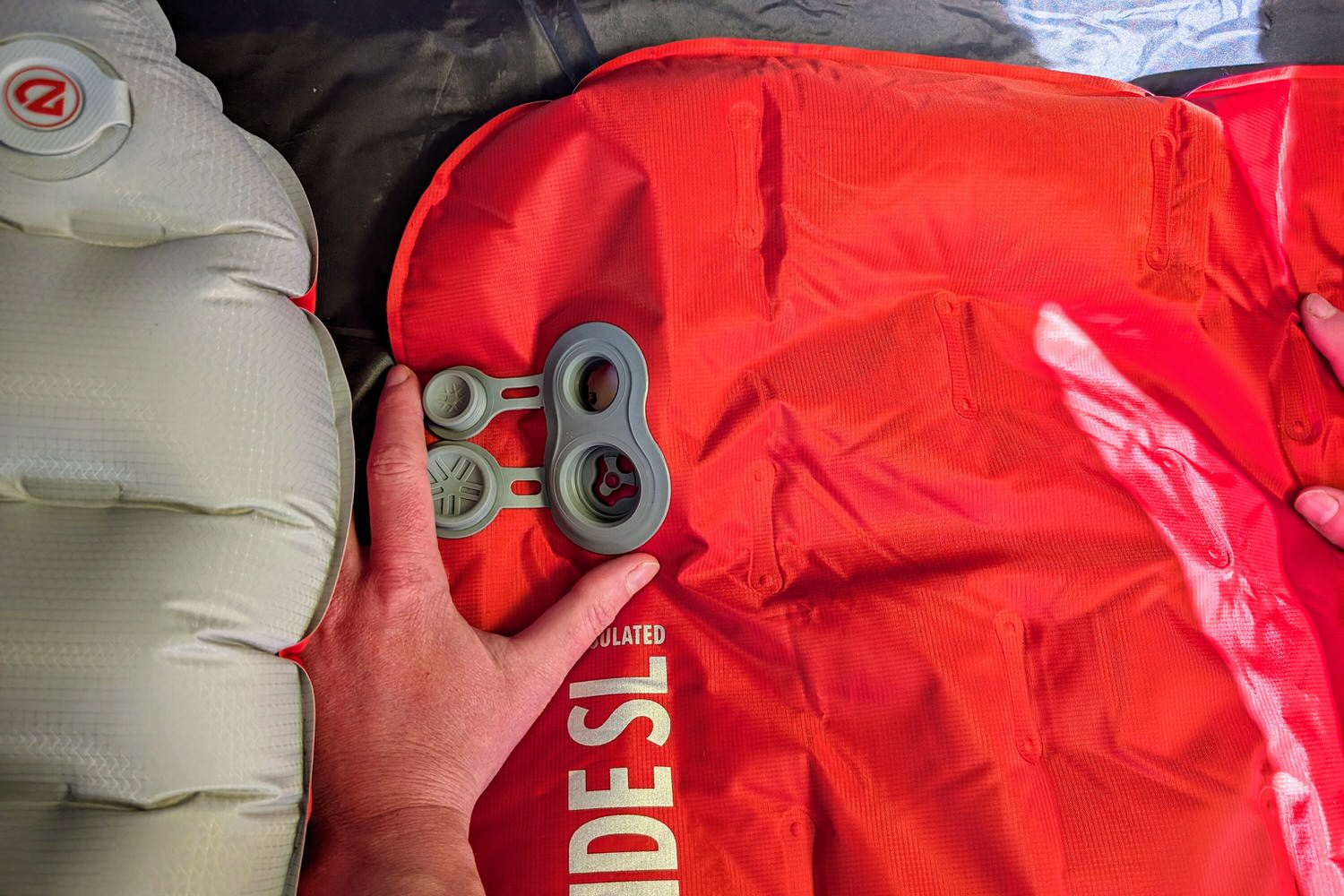
Why Trust CleverHiker
Our team of experts has backpacked 20,000 miles and used sleeping pads for more than 1,000 nights on trail. Senior Gear Analyst, Casey Handley, has hiked several of America’s most iconic long trails, including the Appalachian Trail, Colorado Trail, Arizona Trail, and Long Trail. Her 4,000+ miles of deep experience in the wilderness gives her an intimate understanding of sleep systems, and she has tested dozens of pads over the years. Her prior work at REI also honed her skills in comparative analytics, which she put to good use testing sleeping pads.
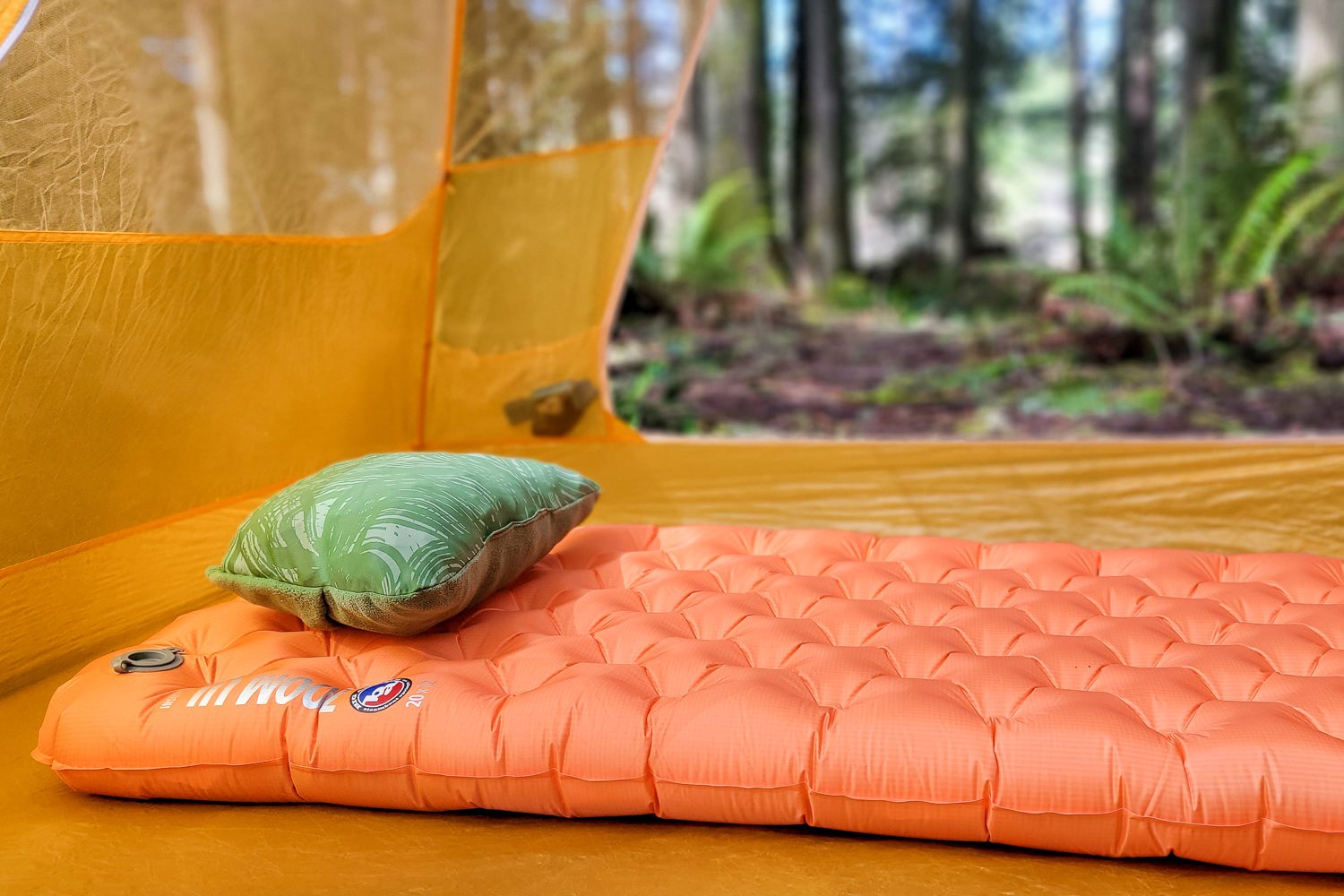
Analysis & Results
Check out how these backpacking sleeping pads compare along the five testing dimensions above. Our hands-on testing also showed that some of our picks are an exceptional value.
VALUE
Though price is not a testable quality of a backpacking sleeping pad, we know that it’s a critical factor in making a purchase decision. With that in mind, we are on the lookout for products that have a high value. That is, real-world performance that exceeds what we would expect based on the price point. The NEMO Switchback is a high-quality foam pad with an agreeable price. On the inflatable side, the Therm-a-Rest NeoAir XLite NXT is pricey but has top-tier performance, and the Big Agnes Rapide SL Insulated has solid comfort, warmth, and durability, and is easy to use for less dough than most other options.
COMFORT
Unsurprisingly, thicker inflatable models dominate in this dimension. We love the plush comfort of the Sea to Summit Ether Light XT Insulated. The dimpled air cell design conforms closely to the body and limits pressure points that models with horizontal baffles make worse. It is also one of the thickest options on the list and we found that bottoming out is not an issue.
Following closely behind are the sibling NEMO Tensor Trail and NEMO Tensor All-Season. This duo has a similar stippled baffle design that makes them extra comfy and they are much quieter compared to most other options so you won’t wake up your hiking partner as easily if you toss and turn in the night. At 3.5 inches each, they are also quite thick, keeping a side sleeper’s butt and hips above the ground. We also tested the rectangular version of the Tensor Trail, which offers additional space for your shoulders and feet over mummy-style pads.
Rounding out the top of the list for comfort, the Therm-a-Rest NeoAir XLite NXT and Therm-a-Rest NeoAir XTherm NXT also happen to be a couple of the top performers overall. Though their horizontal baffles don’t cradle the body quite as well, they are both still a plush three inches thick, providing plenty of padding for a restful night’s sleep, and are relatively quiet.
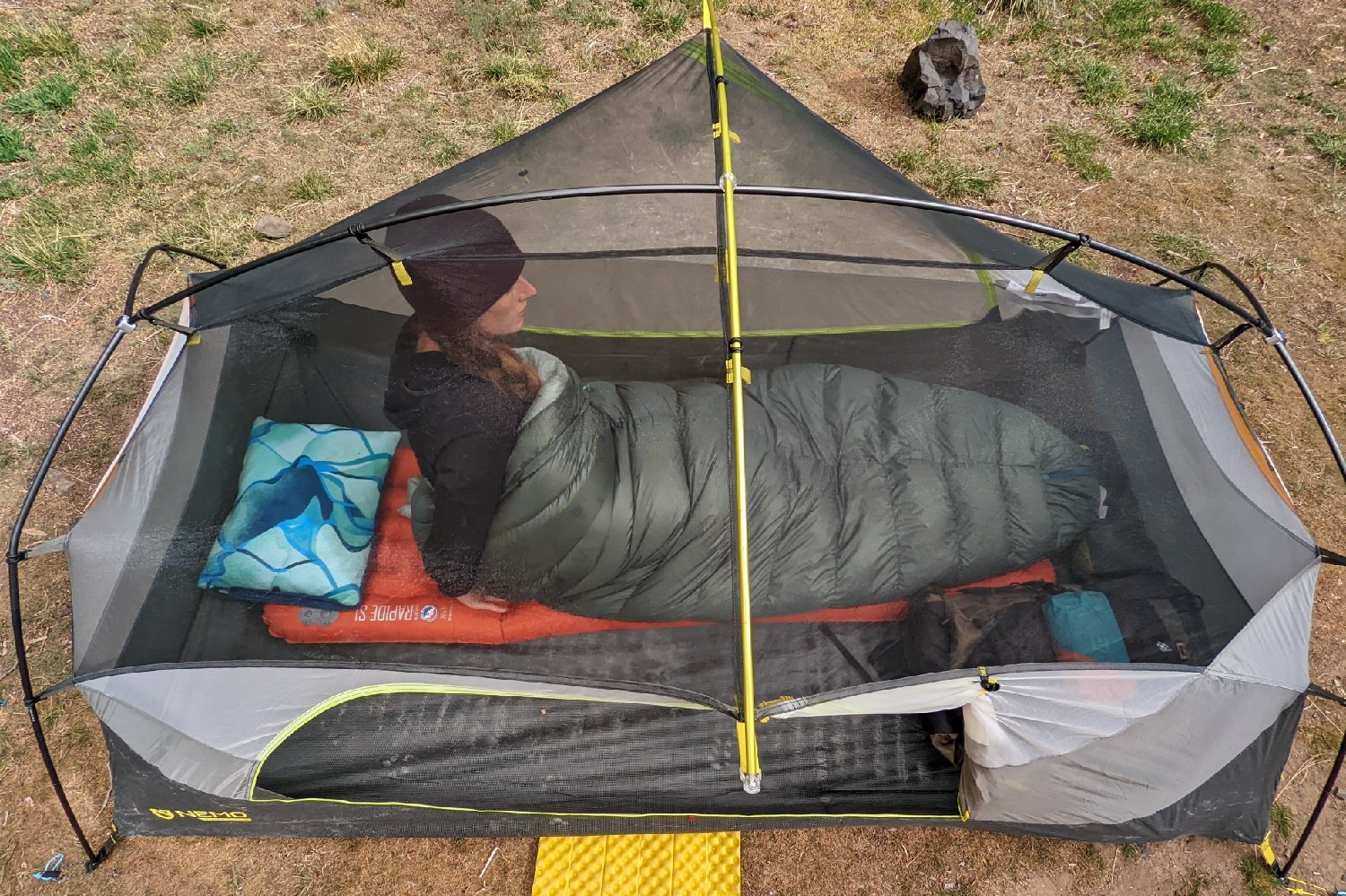
WEIGHT
Weight is straightforward – the lighter the better. In this regard, the Therm-a-Rest NeoAir UberLite easily takes the top spot. It’s several ounces lighter than the closest competition. If you are willing to sacrifice pretty much everything else to save as much weight as possible while still carrying a true sleeping pad, it’s hard to pick against the UberLite.
In the second tier, models like the Therm-a-Rest NeoAir XLite NXT, NEMO Tensor Trail, Therm-a-Rest Z Lite Sol, and Big Agnes Zoom UL are still very reasonable weights for backpacking (however, there are other tradeoffs with these models as well). The NeoAir XLite has an especially compelling warmth-to-weight ratio, as does the NEMO Tensor All-Season.
DURABILITY
For durability, foam pads just beat out inflatables for the simple reason they will always work. Though foam can get depressed in the very long run, the NEMO Switchback and Therm-a-Rest Z Lite Sol are pretty indestructible foam pads so long as you aren’t actively cutting them with a knife or spearing them over a fence post. If you prefer sleeping on a firm surface (the ground), will be sleeping in warm, summer weather, or don’t mind sacrificing in other areas to save money, these foam pads are the best out there. In fact, many hikers will use a foam pad underneath their inflatable to protect it.
If you are like most people and go the inflatable route, the Therm-a-Rest NeoAir XTherm NXT and NEMO Tensor All-Season are the hardiest of the lot. Both of these options have thicker-than-average material on the underside to protect against punctures and abrasions. In addition, the valves are well-designed, which mitigates one of the most common failure points of inflatable sleeping pads.
The Big Agnes Rapide SL Insulated, Therm-a-Rest NeoAir XLite NXT, and Sea to Summit XT Insulated are also all top performers in this dimension.
WARMTH
For true cold-weather insulation, the Therm-a-Rest NeoAir XTherm NXT is the clear top choice. With an R-value of 7.3, it is super warm and has an outstanding warmth-to-weight ratio. For a cold winter trip, we trust the XTherm the most.
For chilly three-season adventures, the NEMO Tensor All-Season has a staunch R-value of 5.4, making it a great option for late-season and/or high-alpine adventures. Even in the summertime, we don’t think it is overkill.
Following closely behind are models like the REI Helix Insulated Air, Big Agnes Rapide SL Insulated, Therm-a-Rest NeoAir XLite NXT, and Big Agnes Zoom UL. The first two are slightly warmer but also a little heavier, while the second pair save a few ounces in weight while maintaining fairly comparable – though slightly lower – R-values. All of these options are more than adequate for the typical summer backpacking trip and will do the trick in chillier shoulder season outings.
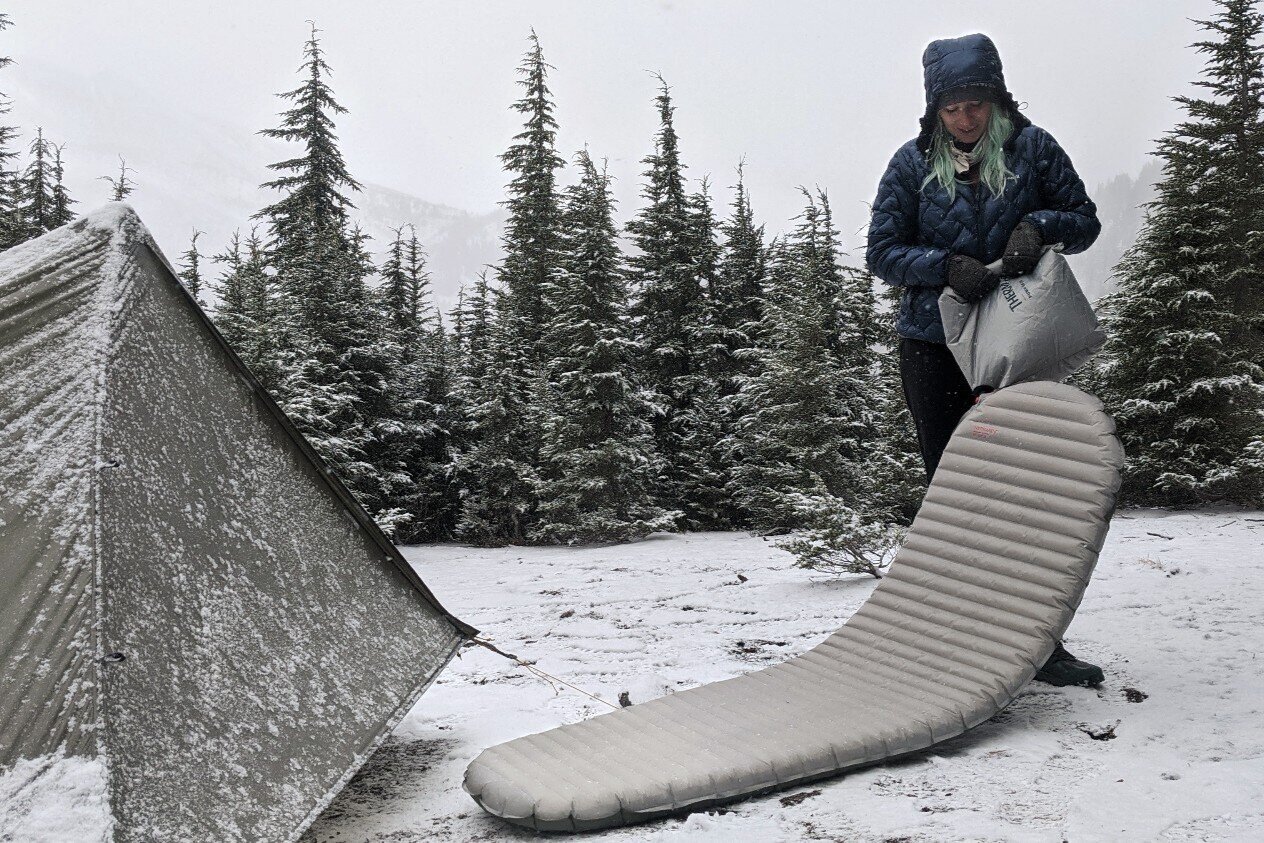
EASE OF SETUP
Similar to durability, foam pads are just inherently easier to set up than inflatables so the NEMO Switchback and Therm-a-Rest Z Lite Sol again earn top marks here. Both fold/unfold accordion style. Paired with their durability, their ease of setup make them great options not only for nighttime but quick protection from the ground during a siesta or lunch break.
The NEMO Tensor All-Season and Big Agnes Rapide SL Insulated are at the top of the inflatable heap. The former has an exceptional low-profile valve design that pairs with the included pump sack for comparatively fast inflation and deflation. The Rapide also comes with a pump sack and the two-way valve makes micro-adjustments super simple once the pad is fully inflated.
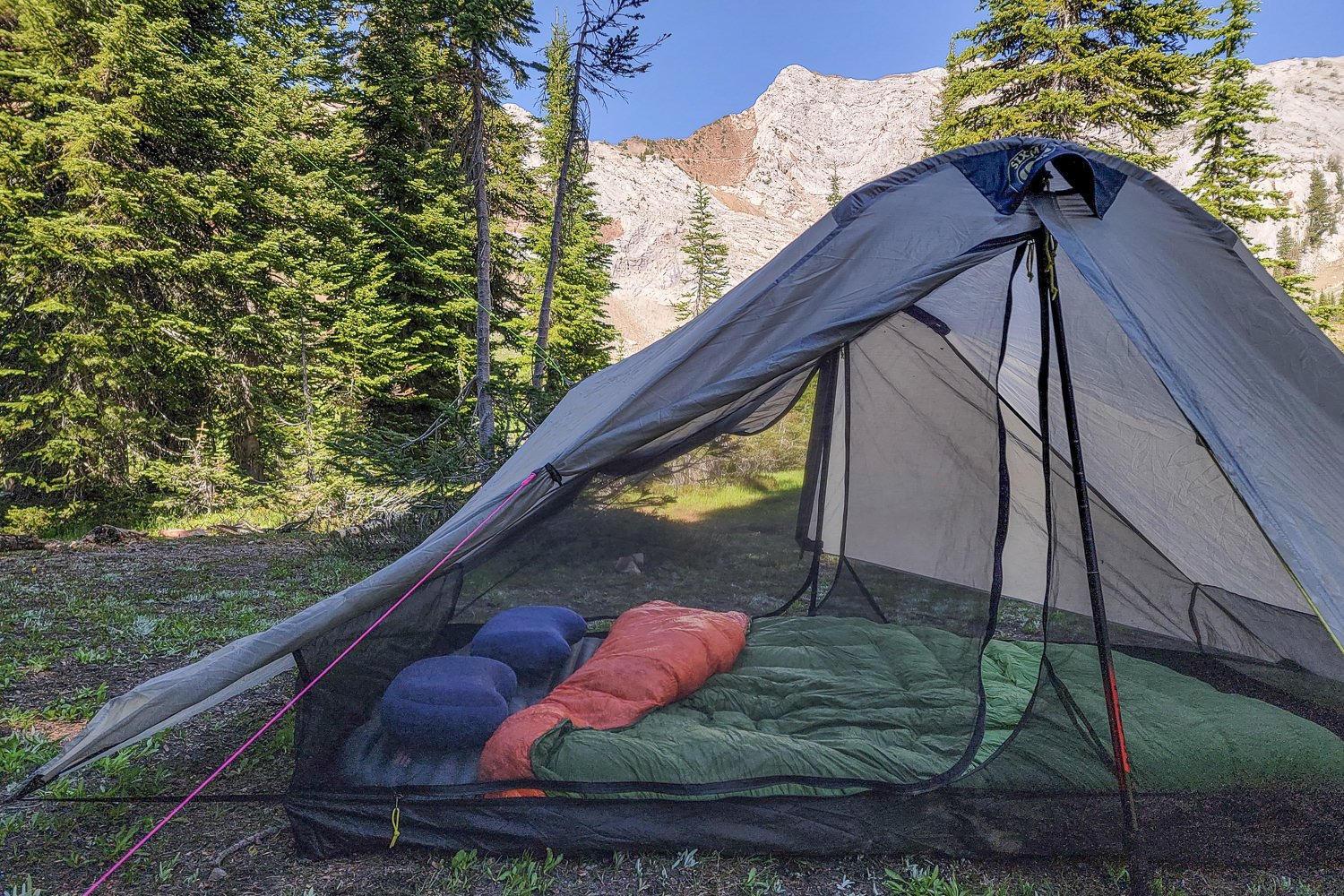
How to Choose A Backpacking Sleeping Pad
KEEPING WEIGHT DOWN
Your sleeping pad will be one of the four heaviest items in your pack – tent, backpack, sleeping bag, sleeping pad – so this is a great place to save weight. We consider weight one of the most important specs for backpacking gear. The lighter your backpack, the more comfortable it will be, the more miles you’ll be able to hike, and the more enjoyable your trip will be. Just remember, a lighter pad means a tradeoff with durability, comfort, and warmth.
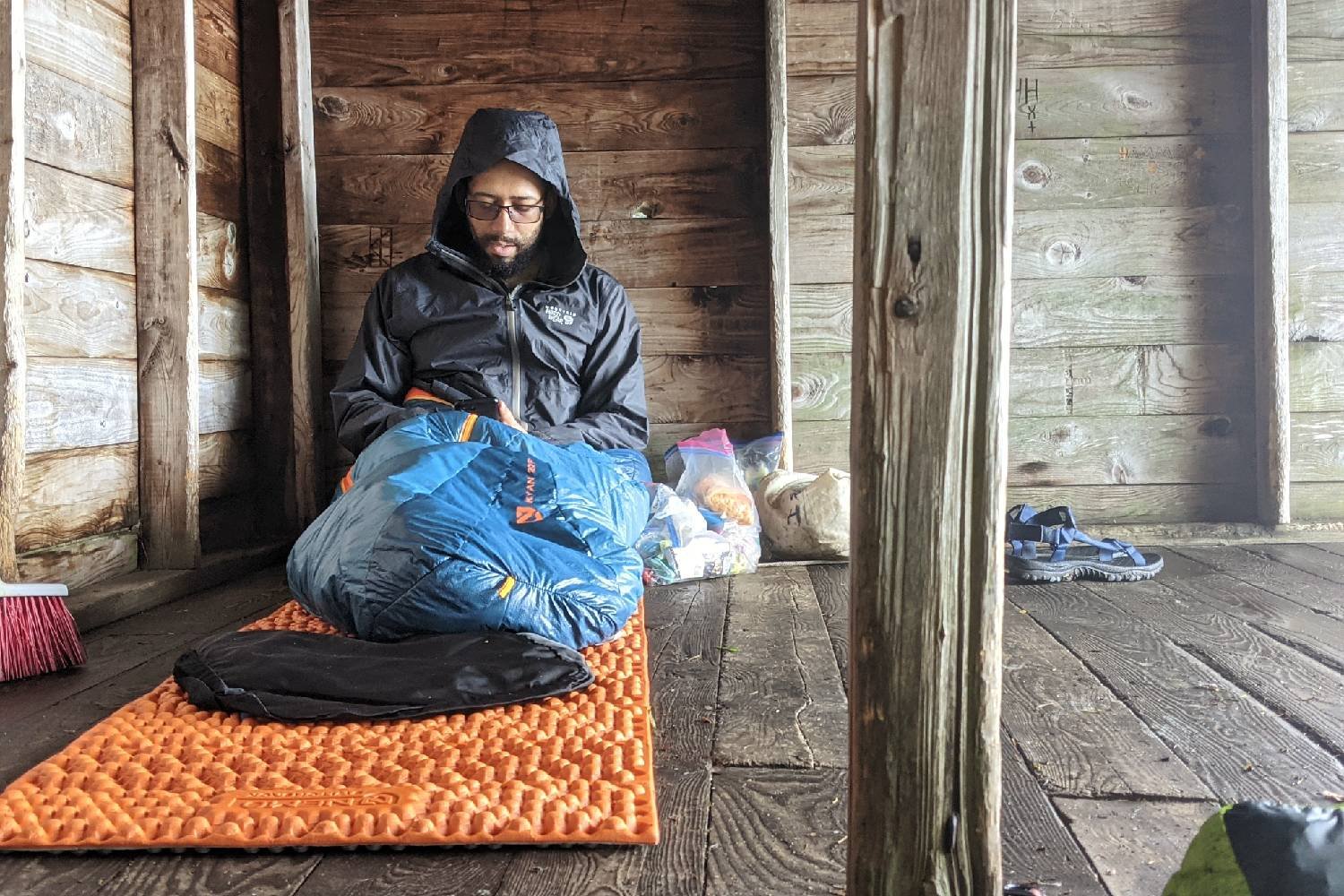
WARMTH & R-VALUE
Insulation tends to be one of the most overlooked specs of backpacking sleeping pads. The R-value of a sleeping pad measures how well it insulates you from the cold ground. The higher the R-value, the warmer the pad. Sleeping pad insulation can easily mean the difference between being toasty warm and shivering through the night.
Sleeping pads with R-values of 0-3 are best for warm-weather trips. R-values of 3-5 work for most 3-season backpacking conditions. R-values of 5-6 are good in temperatures around or below freezing. A pad with a 6+ R-value (or you can add a foam pad under your air pad) is great for cold sleepers or sleeping on snow.
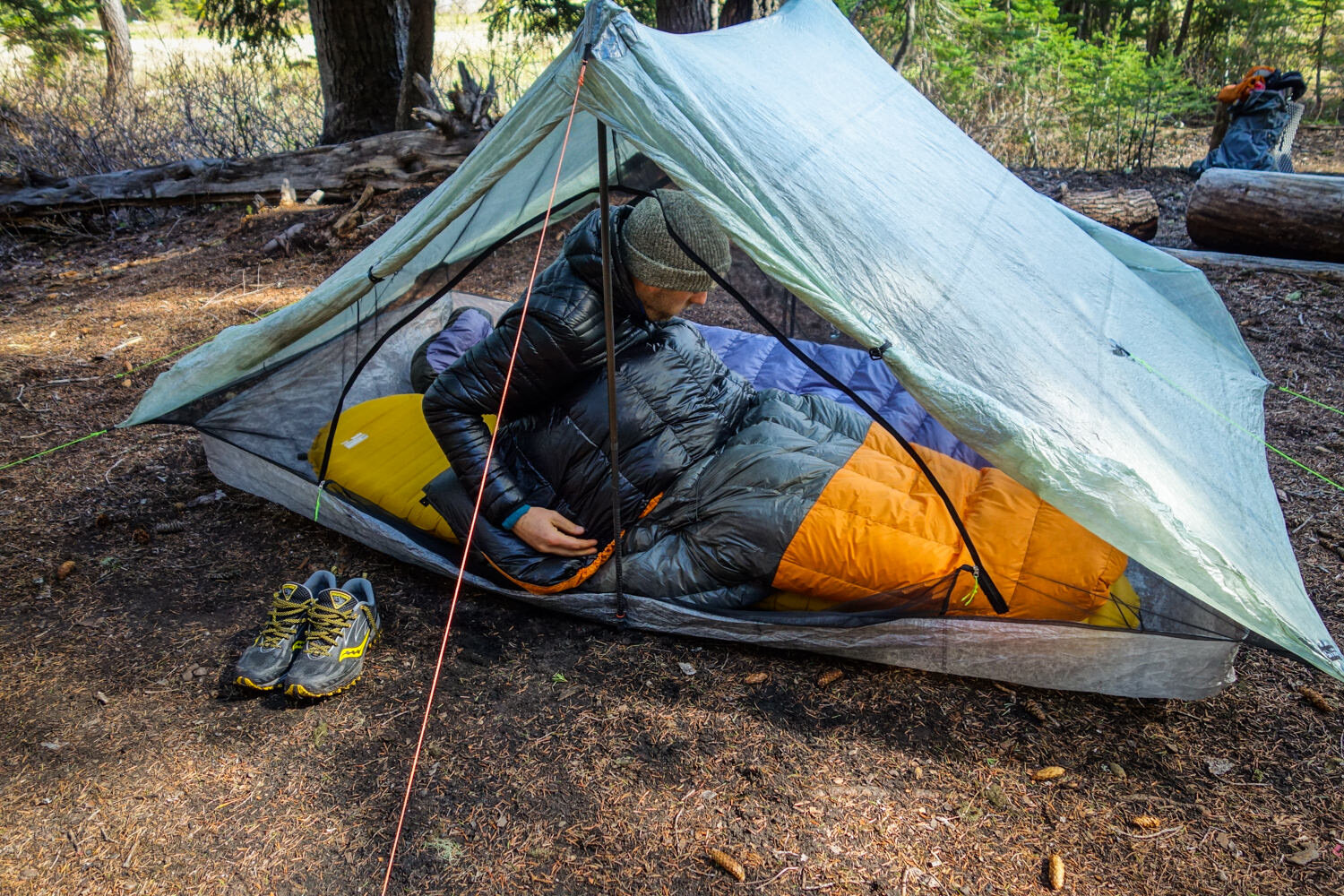
COMFORT & THICKNESS
You’ll want a sleeping pad thick enough to adjust its firmness without bottoming out, but not so thick it feels like a pool float that takes forever to blow up. Having several inches of cushion is especially important if you tend to sleep on your side. Additionally, choosing a backpacking pillow that fits your sleeping style will greatly help add to your comfort.
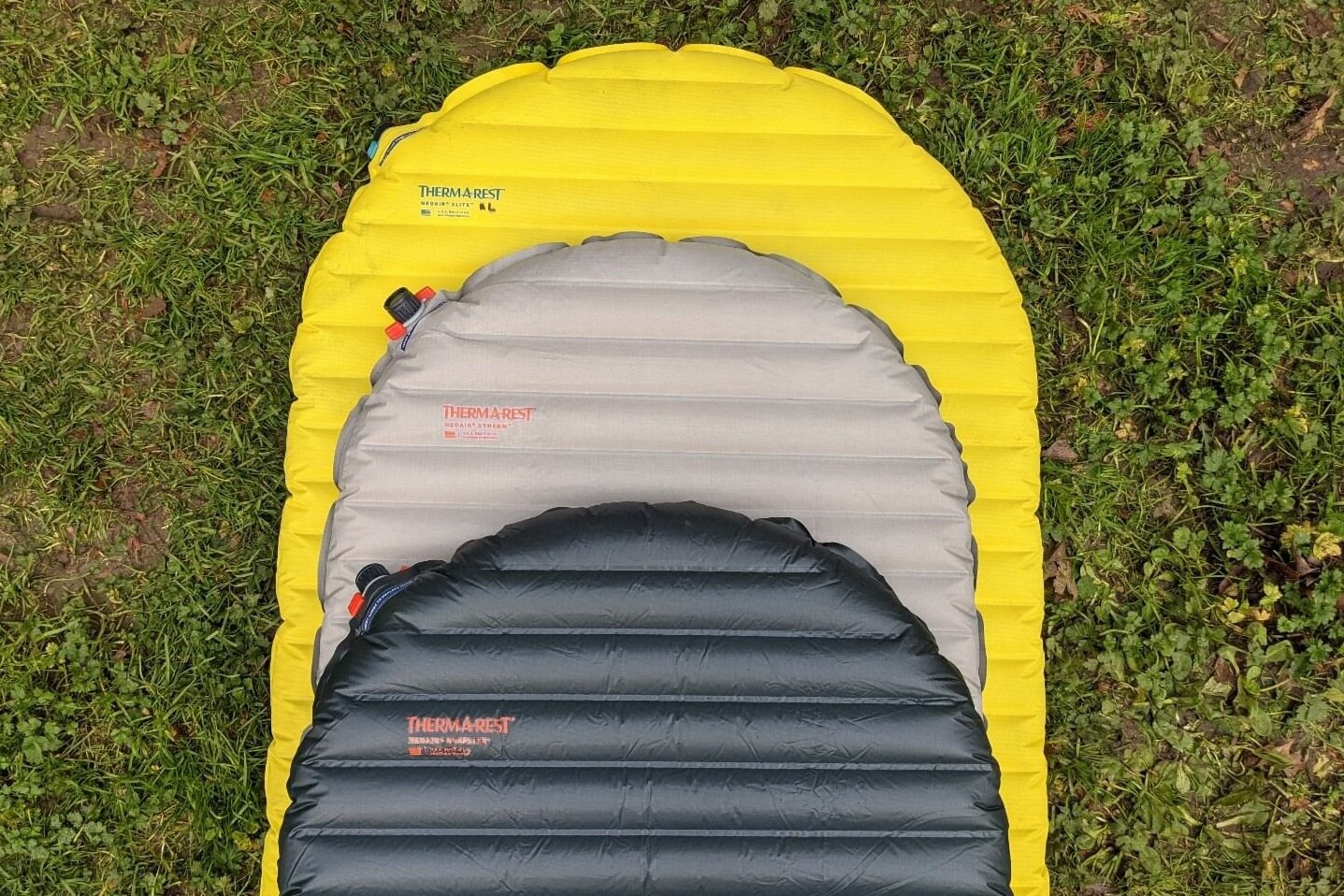
PUMP SACKS
Pump sacks make it much easier to inflate an air pad. Most pump sacks can double as a stuff sack, and some of them can be used as a dry bag as well. Pump sacks are also good for keeping moisture from your breath out of your sleeping pad. This is especially important in cold weather when moisture can create cold spots in your pad. If internal condensation builds up too much, it can also cause mold and mildew to form and degrade the insulation over time.
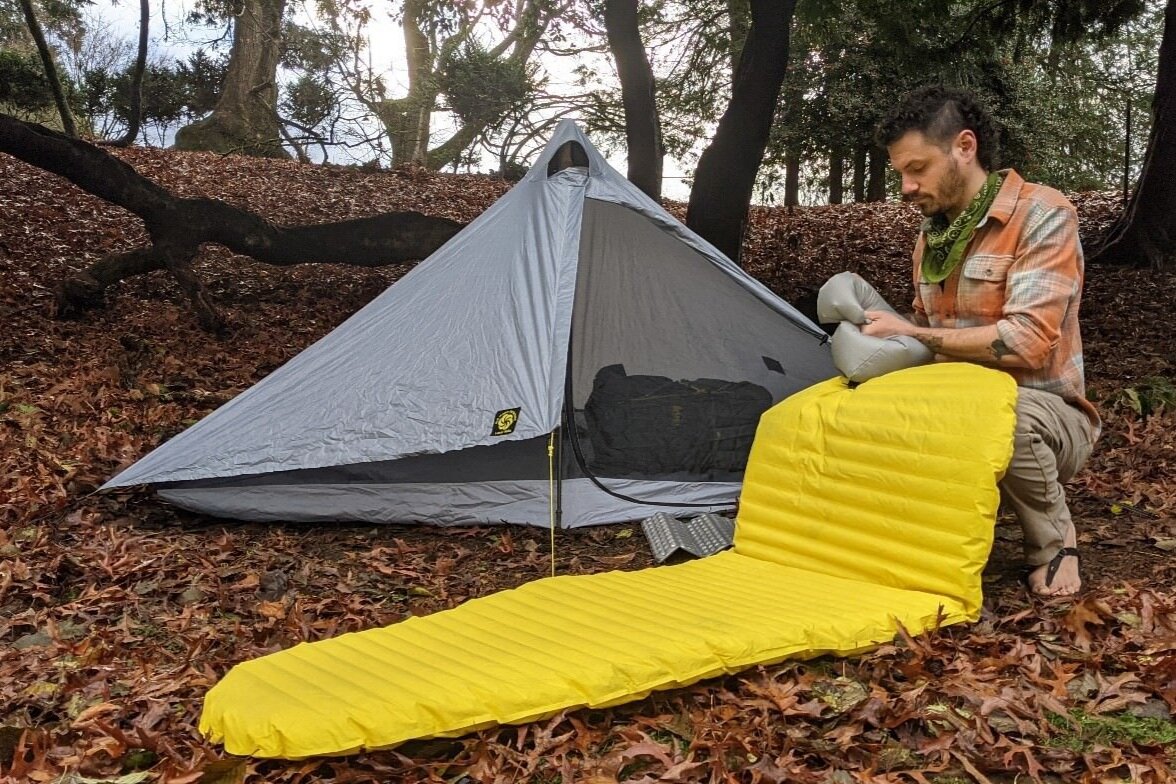
AIR PADS VS. FOAM PADS
The two main types of backpacking sleeping pads are air pads and foam pads. Foam pads are bulkier, but they’re more affordable, quicker to set up, and can be used for multiple purposes – like extra support for a frameless backpack or a seat around camp. Air pads are more expensive, but most backpackers find them to be much more comfortable than foam pads. The main downside with air pads is that they can puncture in the field, so you’ll always want to bring a repair kit.
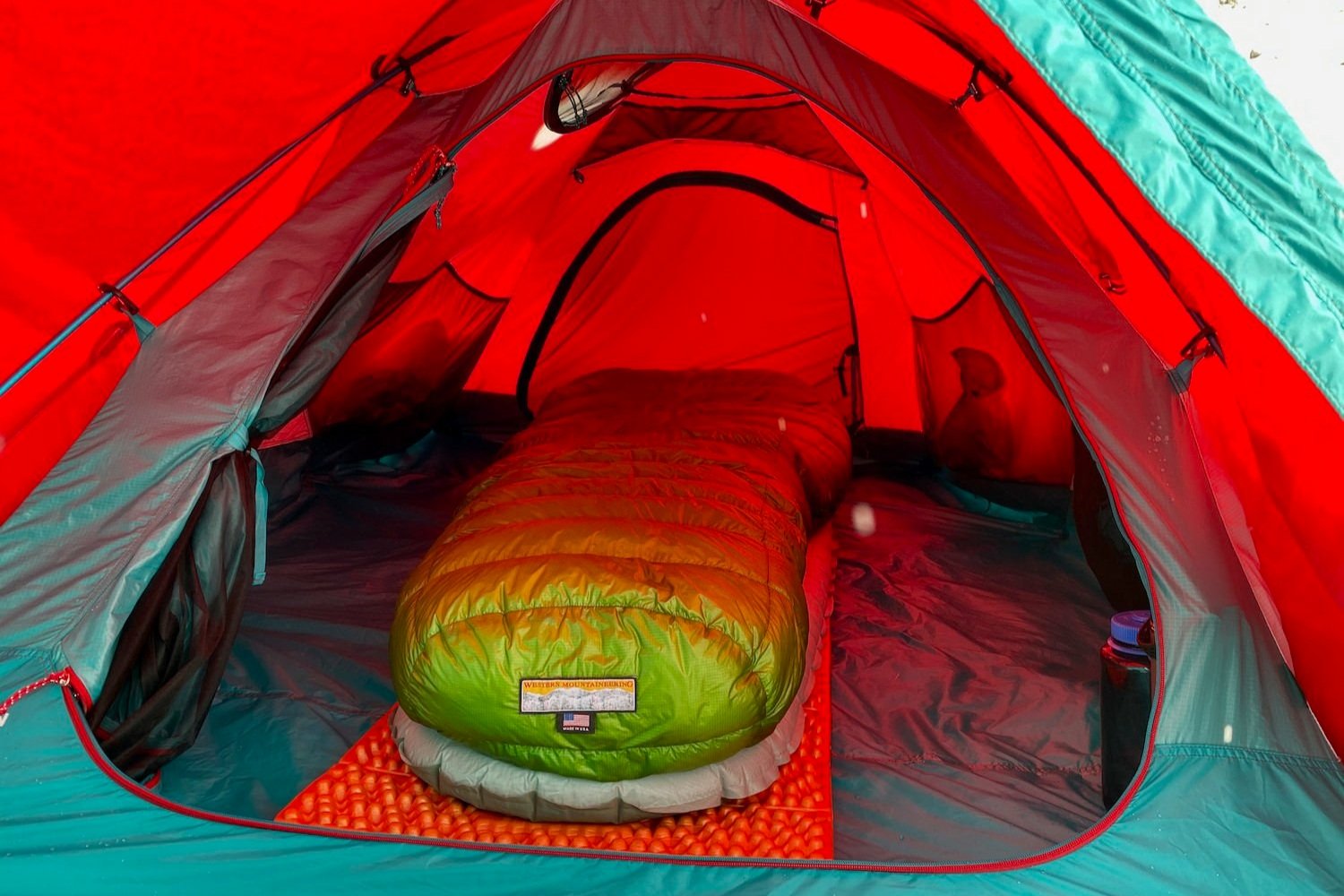
REPAIR KITS
If you decide to take an air pad into the wilderness, make sure to pack a small repair kit. Sharp objects (rocks, sticks, cacti, etc.) can puncture air pads, so always check your sleeping area before setting up camp. If your pad springs a leak and you don’t have a way to fix it, you’re going to be one unhappy camper. Almost all the air pads listed above come with a repair kit, but we always pack Tenacious Tape just in case.
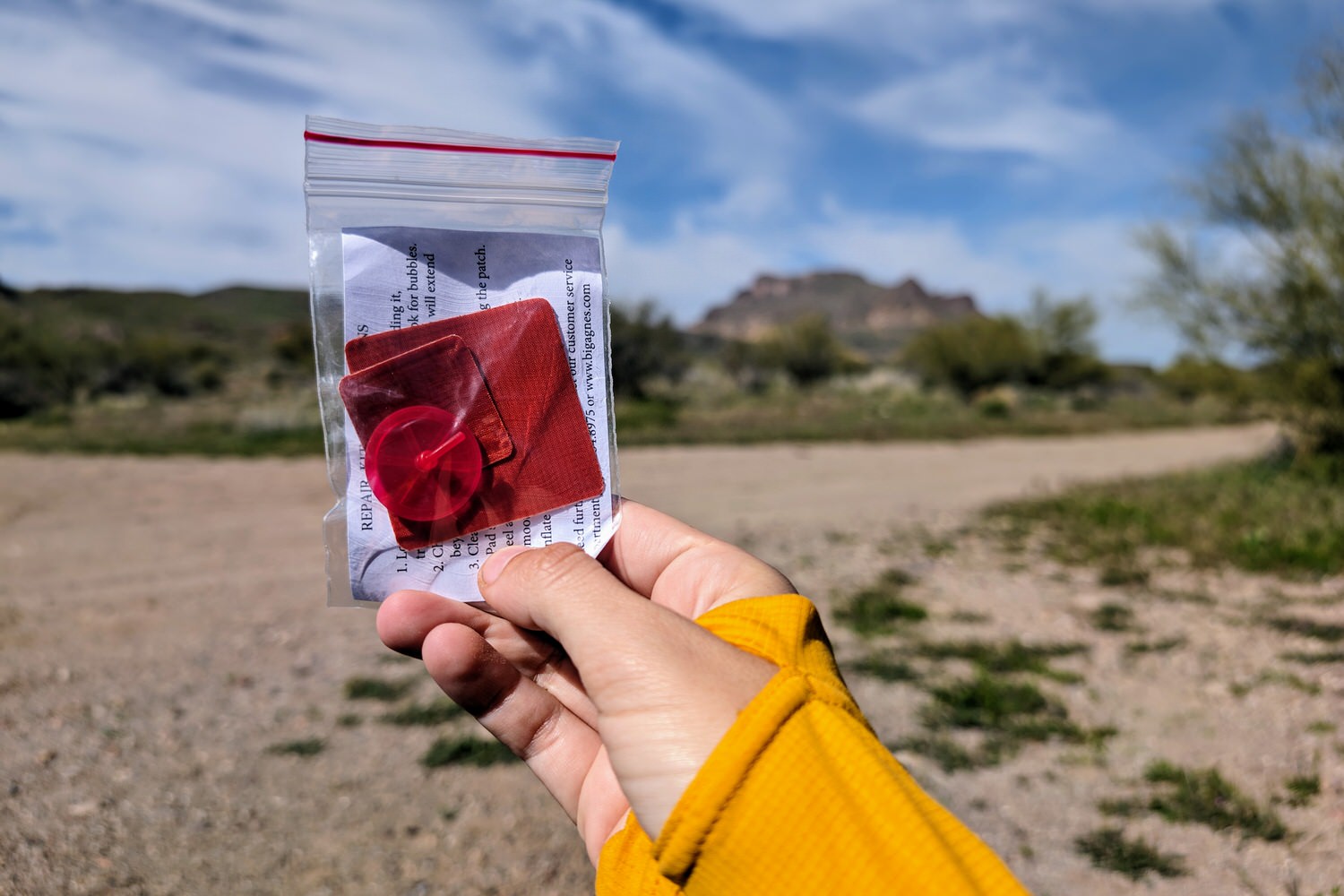
LENGTH
Your hips and shoulders are the biggest pressure points for sleeping pads, so it’s important to use a pad that will give you comfort in those areas. Some ultralight backpackers use short, torso-length pads and let their legs hang off the end to save weight. But this puts your body into questionable alignment unless you have adequate gear to prop up your knees and feet. Most backpackers prefer the comfort of a full-length pad that cushions their entire body and keeps their feet warm.
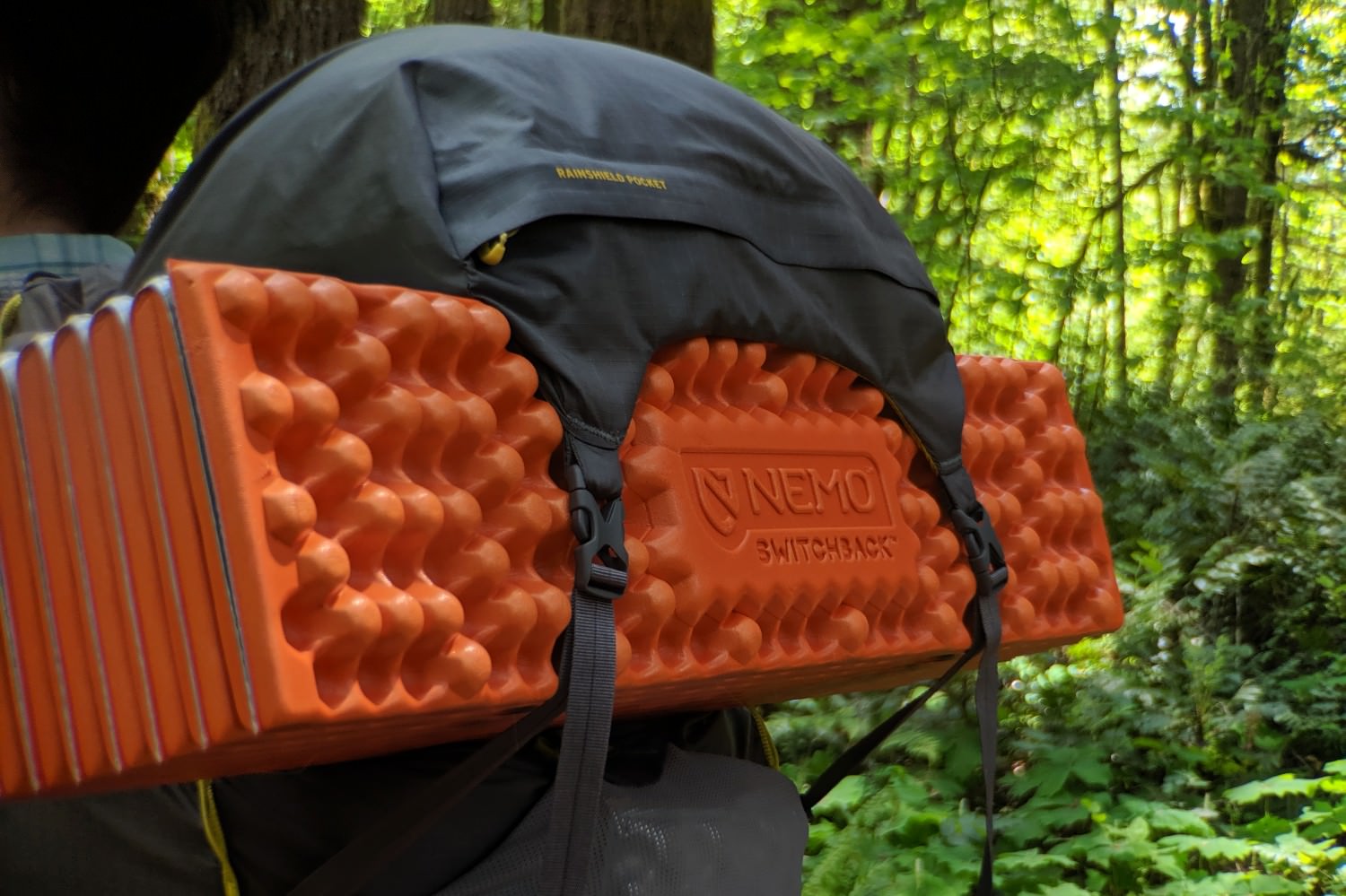
WIDTH
Choosing the right width for your sleeping pad will largely depend on your sleeping style. Side sleepers are often fine with standard width pads, and back sleepers tend to prefer a bit more width to keep their arms from sliding off. Almost all the pads we list above come in a wide size option.
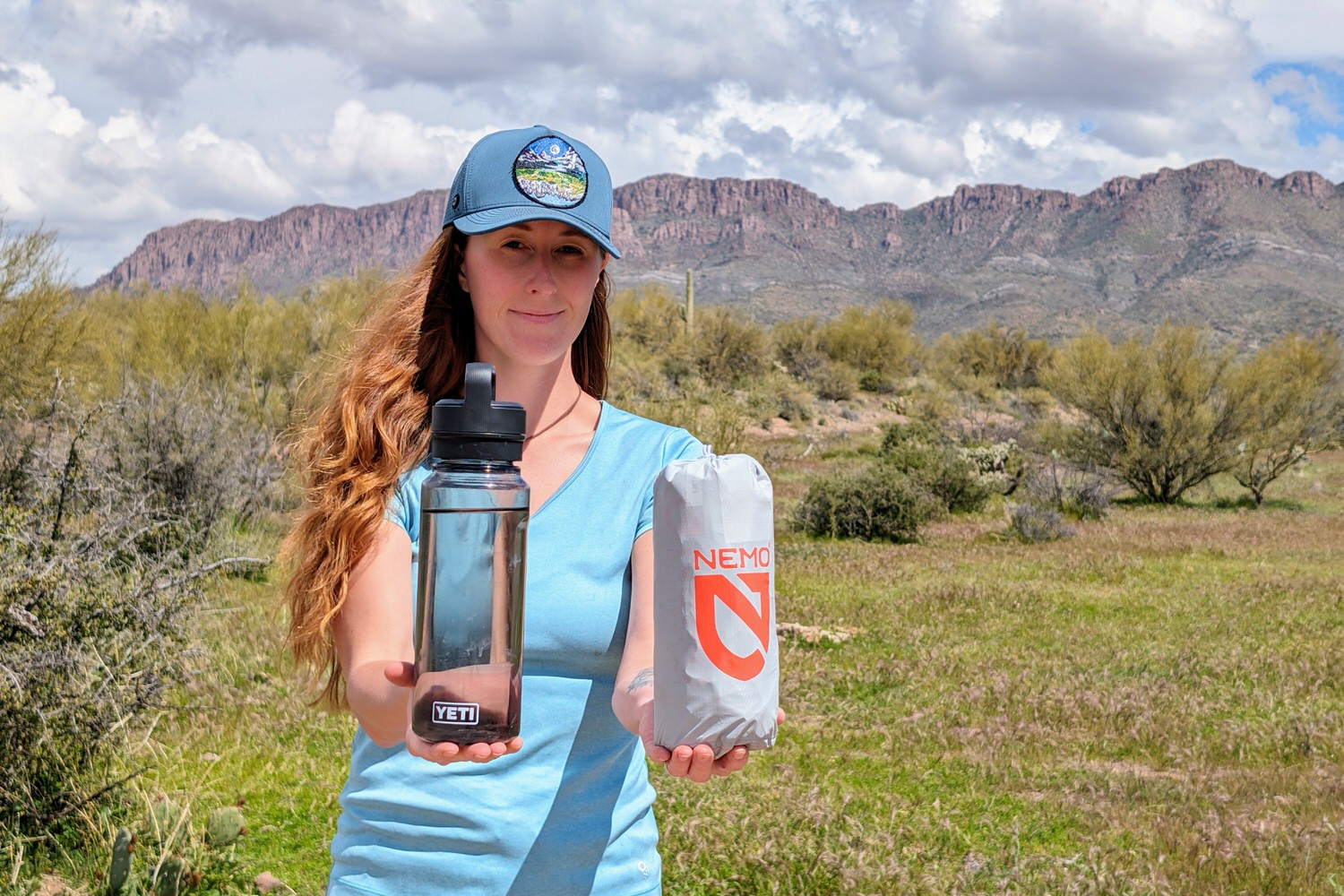
SHAPE
Many backpackers choose mummy-shaped sleeping pads to save weight, but those who like to sprawl out while sleeping will probably get more enjoyment out of a rectangular pad.
Having a highly packable backpacking sleeping pad is a nice benefit, and most air pads pack down very small these days.
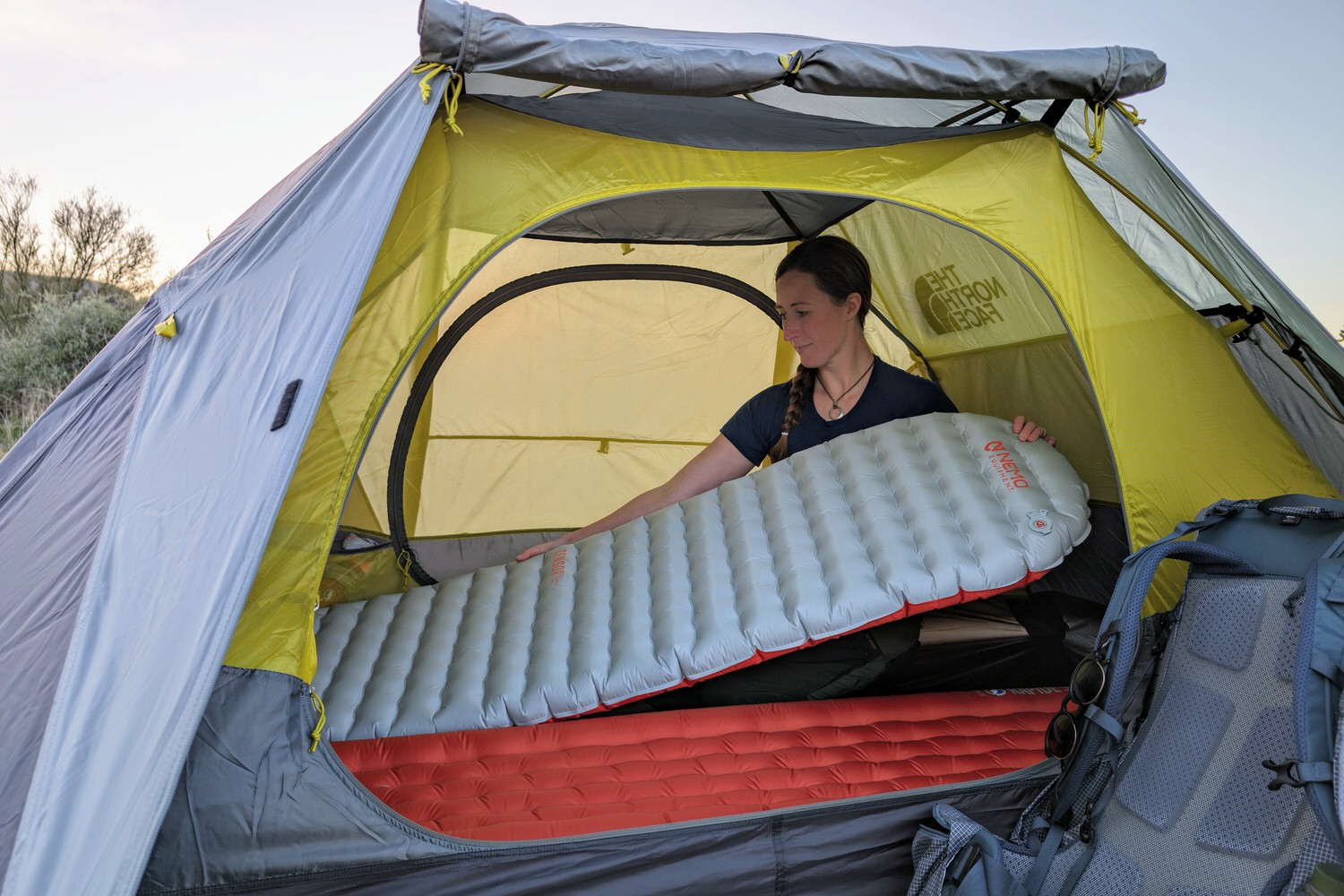
Conclusion
There are a lot of options out there when it comes to backpacking sleeping pads. Though it can feel overwhelming, we hope this guide has given you the information you need to find the pad that will give you your best night’s sleep possible.


